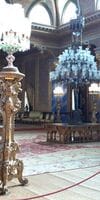The largest and most diverse city in Turkey, Istanbul, is not only located in Europe and Asia, but it is also rich in sights, some of which have remained since the time of the sultans.
Museums stand out in a separate category of Istanbul's attractions, of which there are many in the city, ranging from museums in former fortresses and palaces of the Ottoman rulers to modern art galleries.
This article contains a list of museums in Istanbul (with addresses, websites, photos and descriptions), which are, among other things, the most interesting and are included in the lists of top museums in the city.
!!! Hagia Sophia and Kariye (Monastery of Chora) are today mosques. The entrances are free.
Topkapi Palace with St. Irene's Church
The Topkapi Palace (Topkapı Sarayı) served for 400 years as the main residence of the sultans of the Ottoman Empire, as well as the administrative and educational center of the state.
Today, the former Topkapi Palace is a museum, a magnificent architectural monument of the 15th-19th centuries and is a complex surrounded by high walls. The Topkapi include: courtyards and the palace complex itself with an administrative part and a harem, as well as other buildings and panoramic terraces. Also in the complex is the Church of St. Irene.
Entrance to the palace and the Church of St. Irene is paid.
Topkapi are located in the historical part of Istanbul, in the Fatih district, at the address: Cankurtaran Mh., 34122 Fatih / Istanbul.
Topkapi Palace website: topkapi-sarayi. More about the Topkapi Palace with the Church of St. Irene...
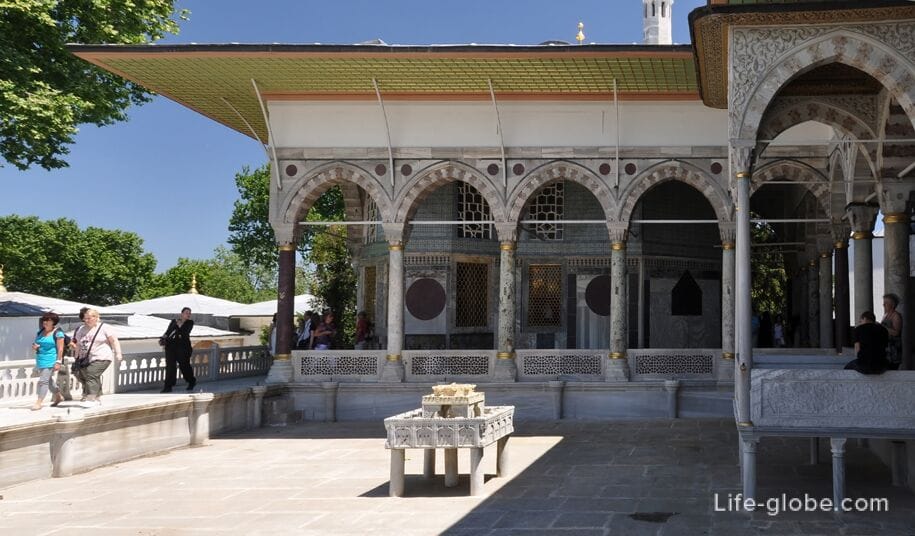
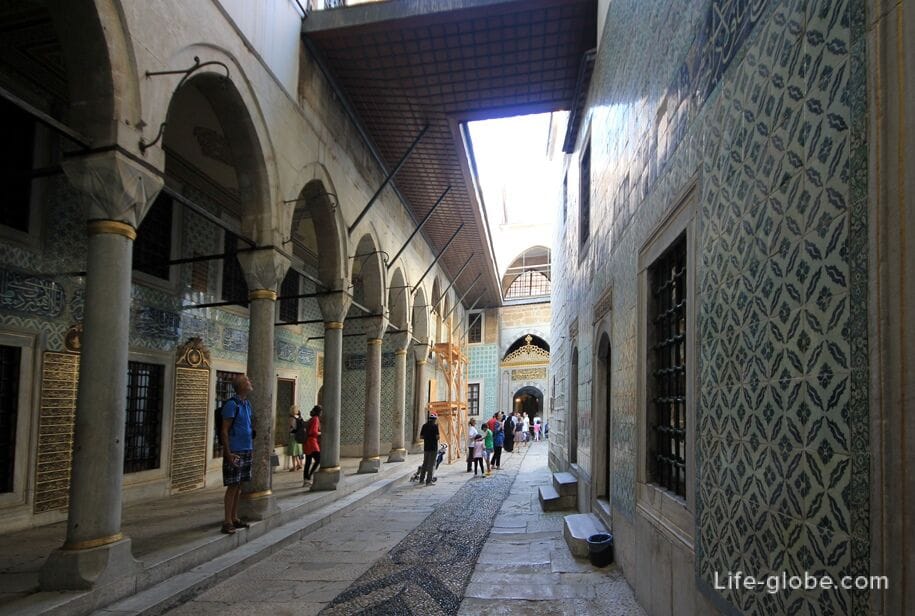

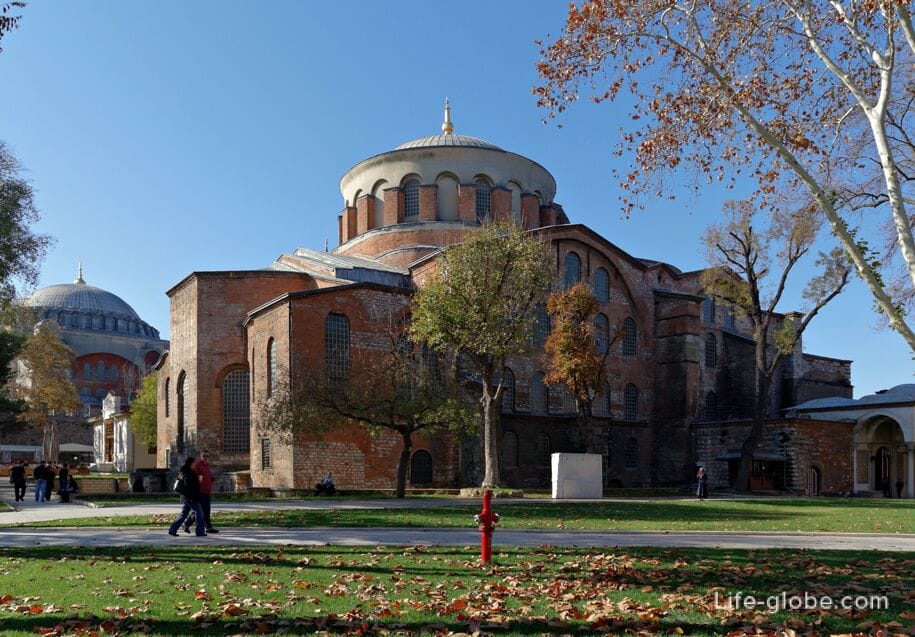
Istanbul Archaeological Museum
The Istanbul Archaeological Museum (Istanbul Arkeoloji Müzesi) is one of the most important museums of the city, which is a complex comprising three divisions: the Archaeological Museum, the Museum of the Ancient East (Eski Şark Eserleri Müzesi) and the tiled pavilion of 1472 (Çinili Köşk Müzesi / Chinili Keshk).
The museum has about a million exhibits of various cultures brought from the imperial lands.
The Museum of the Tiled Pavilion (kiosk) presents samples of Turkish tiles and ceramics, and is one of the oldest examples of Ottoman civil architecture in Istanbul.
The building, which is used as a Museum of Ancient Oriental Works, was built by Hamdi Bey in 1883 as the Academy of Fine Arts. The architect of the building was Alexander Vallori, who would later build the classical building of the Istanbul Archaeological Museum.
Entrance to the museum is paid.
The complex of the Istanbul Archaeological Museum is located in the old historical part of Istanbul, near the Gulhane Park.
The museum's website: muze.gov.tr/muze-detay .
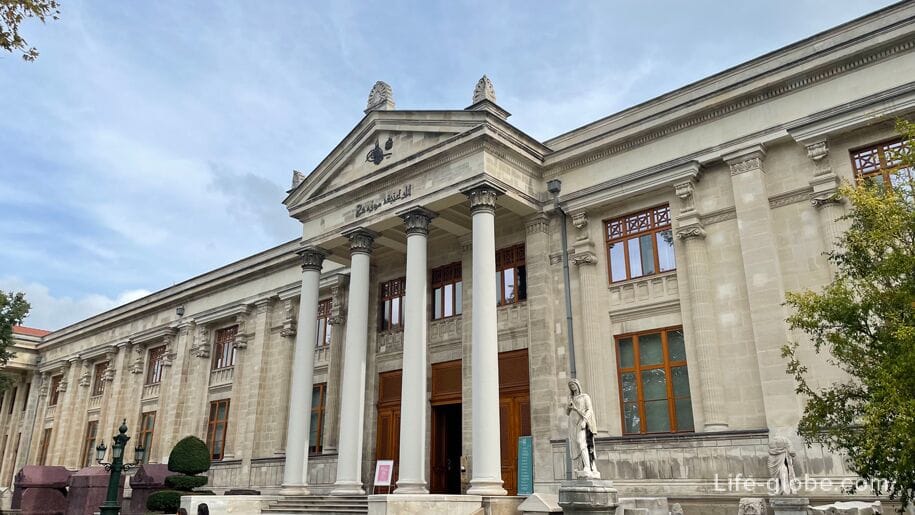
Museum of the History of Science and Technology in Islam
The Museum of the History of Science and Technology in Islam (Istanbul Museum of the History of Science and Technology in Islam) is located in the west of Gulhane Park in the former buildings of the Imperial Stables.
The museum exhibits works, devices and tools invented and developed by Islamic scholars between the 9th and 16th centuries. The museum consists of 12 sections, including astronomy, watches and navigation, military equipment, medicine, mining, physics, mathematics and geometry, architecture and urban planning, chemistry and optics, geography and film screening.
Entrance to the museum is paid.
The museum's website: muze.gov.tr/muze-detay .
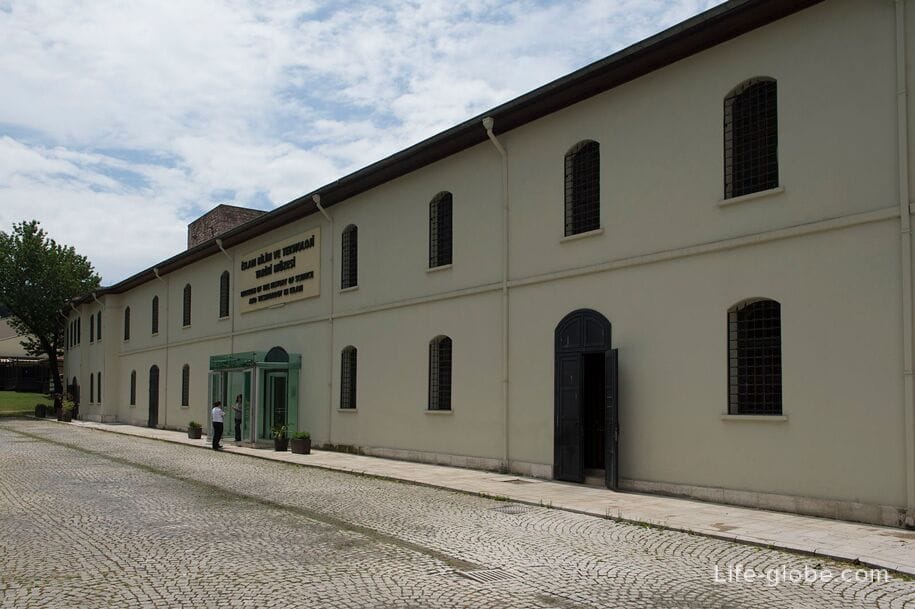
Museum of Turkish and Islamic Art
The Museum of Turkish and Islamic Art (Türk ve Islam Eserleri Müzesi) presents collections of ceramics, sculptures, glass, wood, stone, metal, miniatures, masterpieces of calligraphy, historical documents, carpets with rare specimens, jewelry.
The museum is located in the former Ibrahim Pasha Palace (Ibrahim Paşa Sarayı), which itself is a monument of Ottoman architecture of the 16th century and the former residence of the Grand Vizier of the Ottoman Empire Pargal Ibrahim Pasha.
Entrance to the museum is paid.
The museum is located on the main historical square of Istanbul - Sultanahmet.
The museum's website: muze.gov.tr/muze-detay .
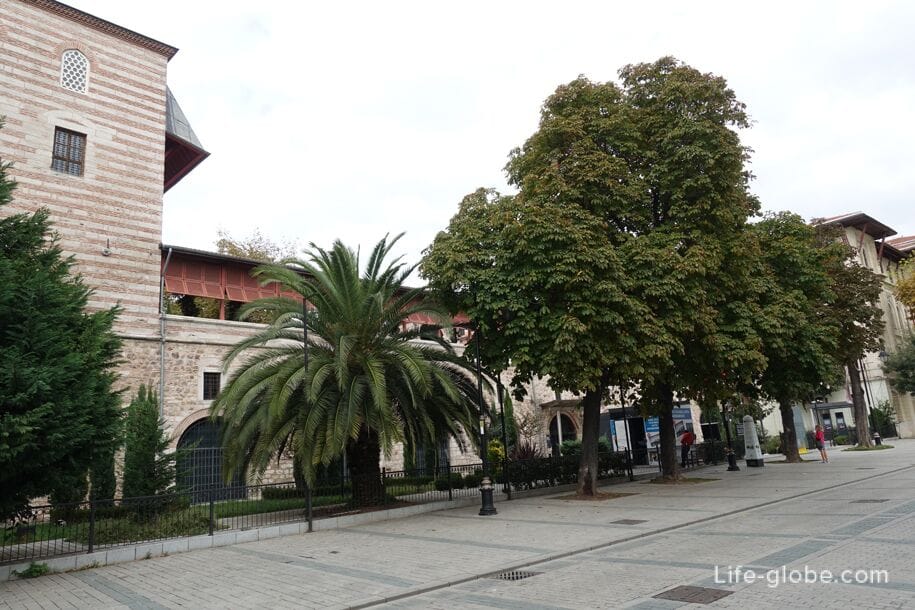

Also on Sultanahmet Square there is the not so well-known Republican Museum of Marmara University (Marmara Universitesi Cumhuriyet Muzesi), which consists of an art gallery where short-term exhibitions are held, and the Ihapa Hulusi Gerey Gallery.
The museum's website: marmara.edu.tr/universite/genel/cumhuriyet-muzesi.

Museum of Mosaics of the Grand Palace
The Museum of Mosaics of the Grand Palace (Büyük Saray Mozaikleri Müzesi) is a museum of collections of mosaics from the time of the Byzantine Empire, discovered on the site of the Grand Imperial Palace of Constantinople.
Now there is no Grand Palace, but previously it was a huge palace complex that served as the main residence of the Byzantine emperors for eight hundred years (from 330 to 1081).
The mosaics in the museum, according to research, date back to the period somewhere between 450-650 years of our era.
Entrance to the museum is paid.
Entrance to the museum with Arasta Bazaar (Arasta Çarşısı), which is near Blue Mosque (Sultanahmet Mosque, Sultanahmet Camii).
The museum's website: muze.gov.tr/muze-detay. Learn more about the Grand Palace Mosaic Museum...
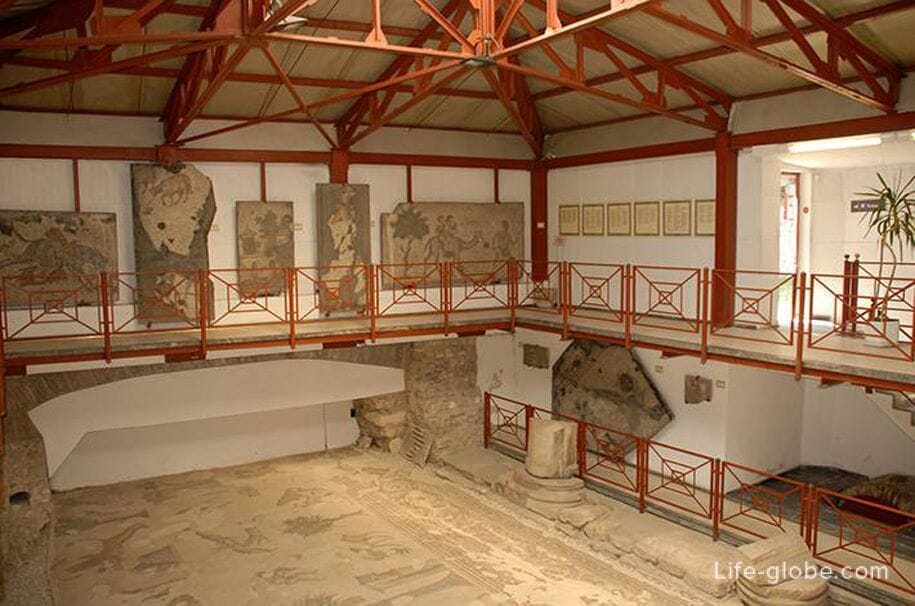
Basilica Cistern
The Basilica cistern or Yerebatan Cistern (Yerebatan Sarnıcı) is one of the most famous, large and well-preserved underground reservoirs of Constantinople.
The cistern was built under the Byzantine Emperor Justinian I and was popularly called the "cistern-palace" because of the marble columns rising from the water, seemingly countless. The name "Basilica cistern" comes from the fact that there was a basilica at this place.
The cistern is a large underground structure with columns, one of which is called the "Crying Column" or "Column of Tears". It got this name due to the fact that, unlike other columns in the tank, it always remains wet, and there are patterns on its surface that resemble tear drops in shape.
The cistern is also notable for the two heads of Medusa, used as pedestals under two columns and belonging to the masterpieces of sculptural art of the Roman period.
Entrance to the Cistern is paid.
Address of the Basilica Cistern: Alemdar, Yerebatan Cd. 1/3, 34110 Fatih/Istanbul, Turkey.
Cistern website: yerebatan.com/tr.
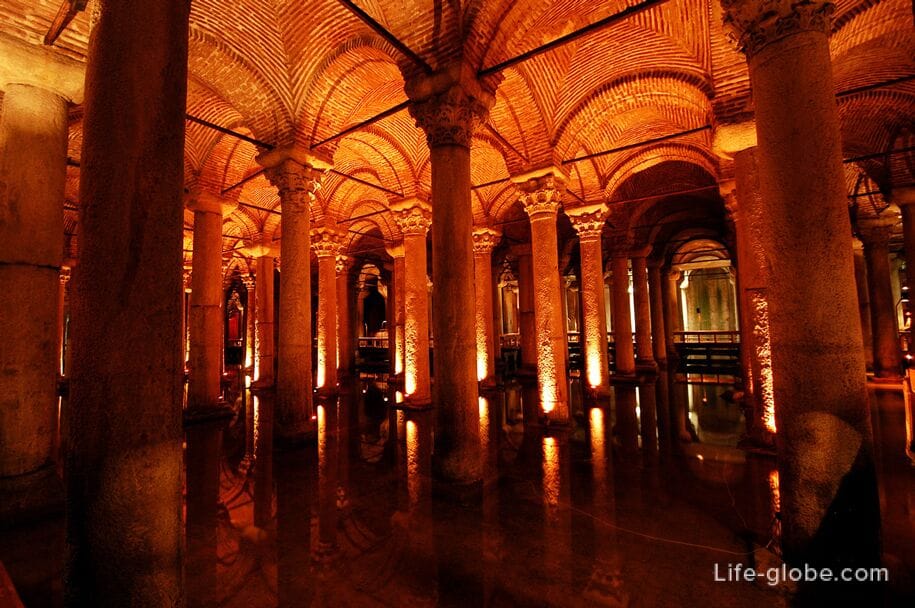
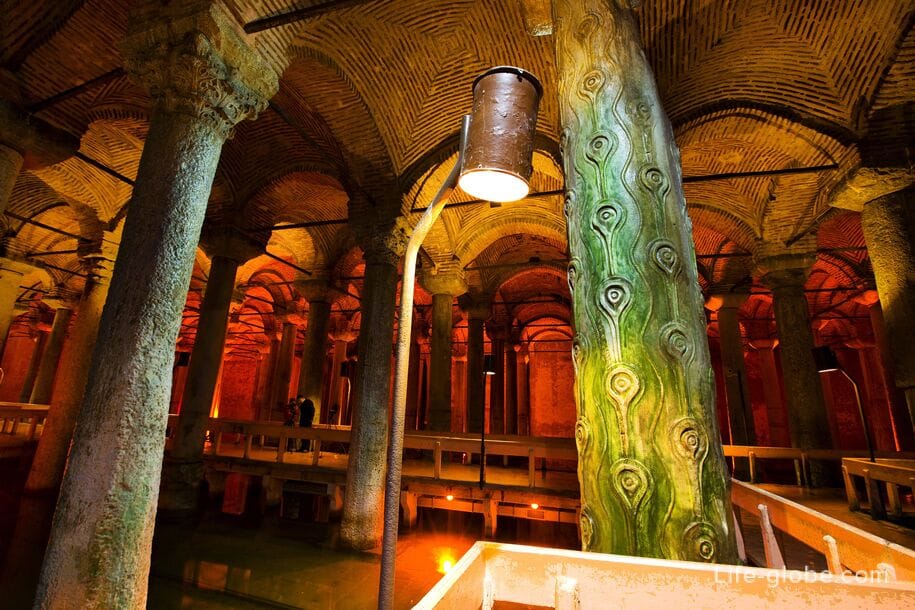
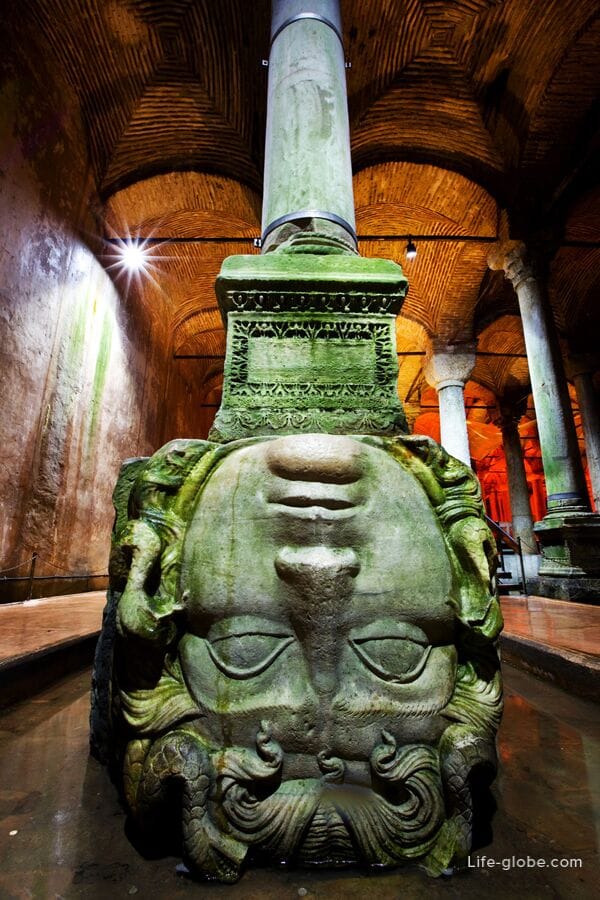
Theodosius Cistern (Sherefie)
The Feodosiya cistern or the Sherefiye cistern (Şerefiye Sarnıcı) is one of the largest and most significant closed cisterns in the city, which has been restored today and functions as a museum, where visitors are shown a 10-minute show with three-dimensional effects and music.
It is assumed that the cistern was built in 428-443, during the reign of Theodosius II. Water was delivered to the cistern from the aqueduct of Valens.
Entrance to the Cistern is paid.
The Theodosius Cistern is located under a modern building, the entrance is from Piyer Loti Caddesi Street No. 2/1. Cistern address: Binbirdirek, Piyer Loti Cd. No:2/1, 34122 Fatih/Istanbul, Turkey.
Cistern website: serefiyesarnici.istanbul. More about the Cistern of Theodosius...
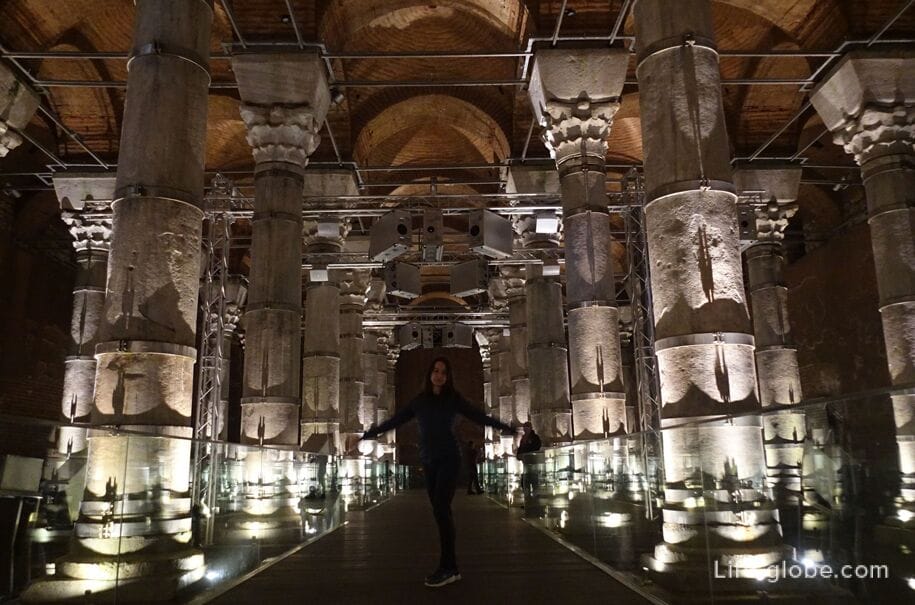
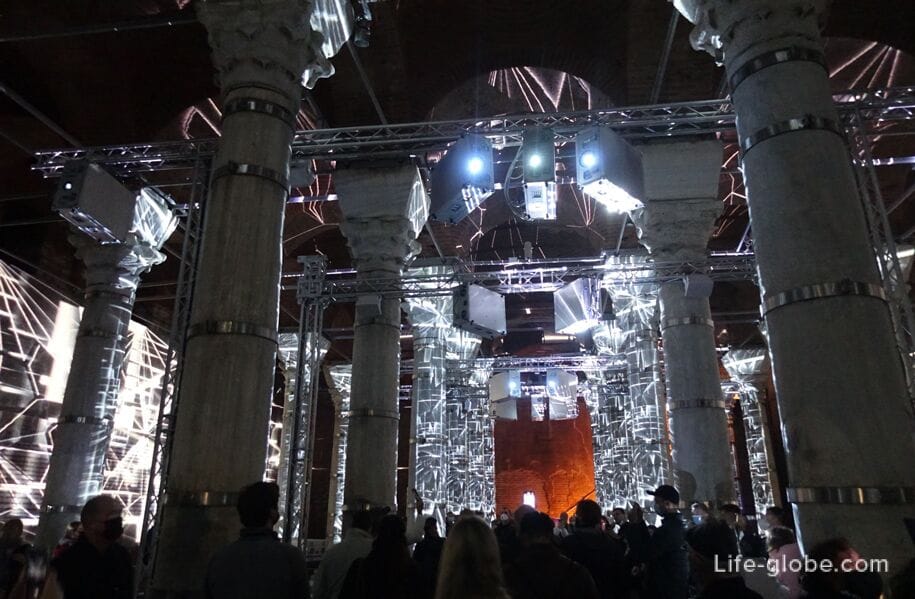
Binbirdirek Cistern
The Binbirdirek Cistern (Binbirdirek sarnıcı), also known as the Philoxena cistern (ΚινστρΡνα ΦιλονΝου), is the second largest reservoir in Istanbul after the Basilica Cistern.
From Turkish, the word "Binbirdirek" translates as "1001 columns", although in fact there are much fewer columns in the tank.
The cistern was built during the reign of Constantine I (4th century). Over time, the cistern dried up, and was used as a workshop from the 16th century.
Today, the Philoxene cistern is open to visitors as a museum. It is also used for exhibitions, concerts, banquets, weddings and other celebrations.
Entrance to the Cistern is paid.
Binbirdirek Cistern Address: Binbirdirek Mah. İmran Öktem Cad. 34122 Fatih / İSTANBUL.
Cistern website: binbirdirek.com.tr. Learn more about the cisterns and dungeons of Istanbul...

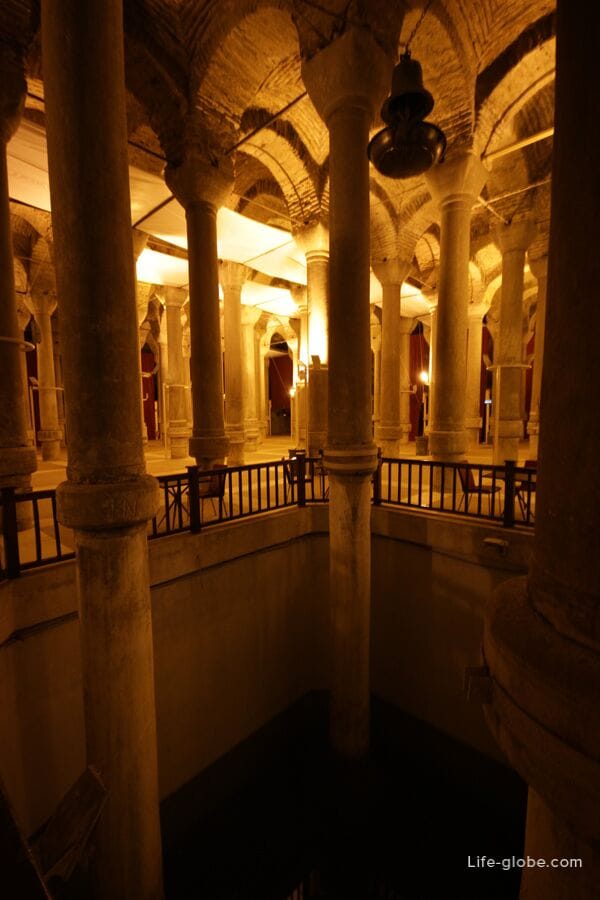
Istanbul Railway Museum
Istanbul Railway Museum (Istanbul Demiryolu Müzesi) is a museum of the history of Turkish railways, which has exhibits from the time of the Orient Express in its collection.
The museum is located in the building of the railway station "Marmaray Sirkeci Istasyonu".
Admission to the museum is free.
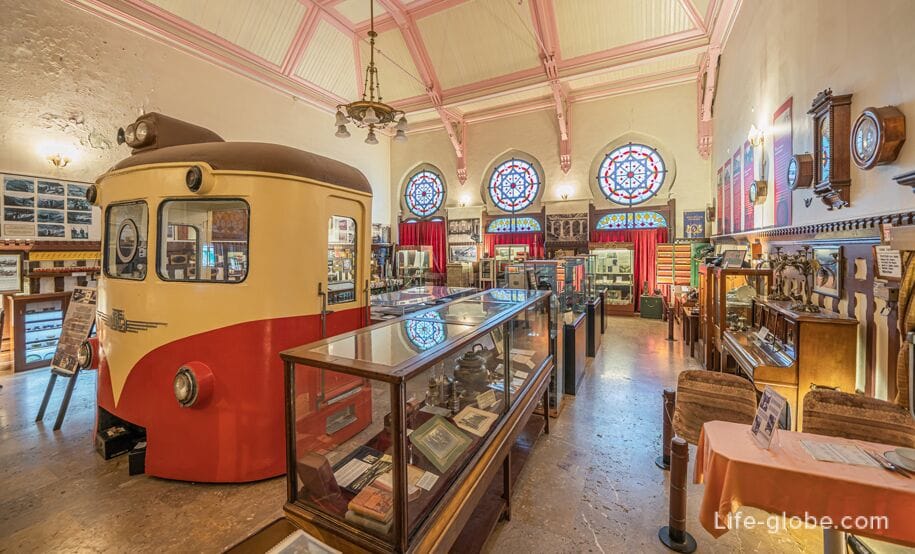
Post Office Museum
The Postal Museum (PTT Müzesi) contains an exposition of postal service items: stamps, telegraphs and telephones.
The museum is located in the building of the old post office.
Admission to the museum is free.
Museum address: Hobyar, Büyük Postane Cd. No: 44, 34112 Fatih/Istanbul, Turkey.
The museum's website: pttpulmuzesi.org.tr/MainPage.aspx.
Bank Museum
The Museum of the Bank (Türkiye Iş Bankası Müzesi) is a collection of documents, banking equipment, communications, photographs, images and promotional materials related to the banking and corporate structure, which have witnessed both its own history and the economic development of Turkey since the founding of Türkiye Iş Bankası.
The museum is located in a historic building that was built as a post office building in 1890. The building was transferred to Türkiye Iş Bankası in 1927 and was used as a branch of the bank until 2004, after which it was converted into a museum and opened to the public.
Admission to the museum is free.
Address Museum: Hobyar, Bankacılar Sk. No: 2, 34112 Fatih/Istanbul, Turkey.
Website museum: turkiye-is-bankasi-muzesi/muze-binasi.
Toy Museum in Balat
The Toy Museum in Balat (Balat Oyuncak Müzesi) contains collections of toys, including rare and unique cast cars, detailed dollhouses, a 50-year-old collection enriched with scenes from popular and classic cartoons.
On the top floor of the museum there are collections decorated with the concept of a giant train. The museum also presents Turkey's largest collection of tin soldiers and dioramas depicting scenes from films of the 80s.
Entrance to the museum is paid.
Museum address: Yavuz Sultan Selim, Abdülezelpaşa Cd. No: 65, 34087 Fatih/Istanbul, Turkey.
The museum's website: balatoyuncakmuzesi.com.
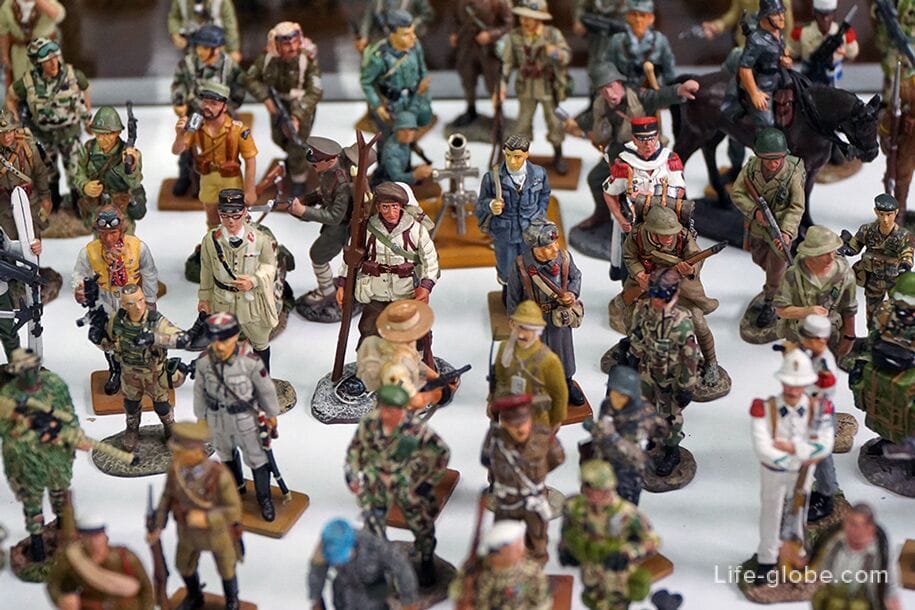
Blachernae Palace (Tekfur Palace)
The Blachernae Palace or Tekfur Palace (Tekfur Sarayı, Tekfur sarayı) today is the remains of a former palace built for the son of the Byzantine emperor.
The Tekfur Palace was one of the palaces used by the emperors during the last period of Byzantine palaces. It was ideally positioned to protect the emperors from possible rebellion. The palace was also used as a workshop for the manufacture of glass and tiles during the Ottoman Empire. During the 57-year-old Latin invasion of Istanbul, the Tekfur Palace and almost all other imperial buildings around it were destroyed.
Today, part of the ruins of the palace have been restored, and are used as a museum with part of the walls, an interior room with an exposition, a courtyard, an elevator and an observation deck.
Entrance to the palace is paid.
Palace address: Ayvansaray Mahallesi, Şişhane Caddesi, 34087 Fatih/Istanbul.
Website of the Blachernae Palace Museum: tekfursarayi.istanbul.

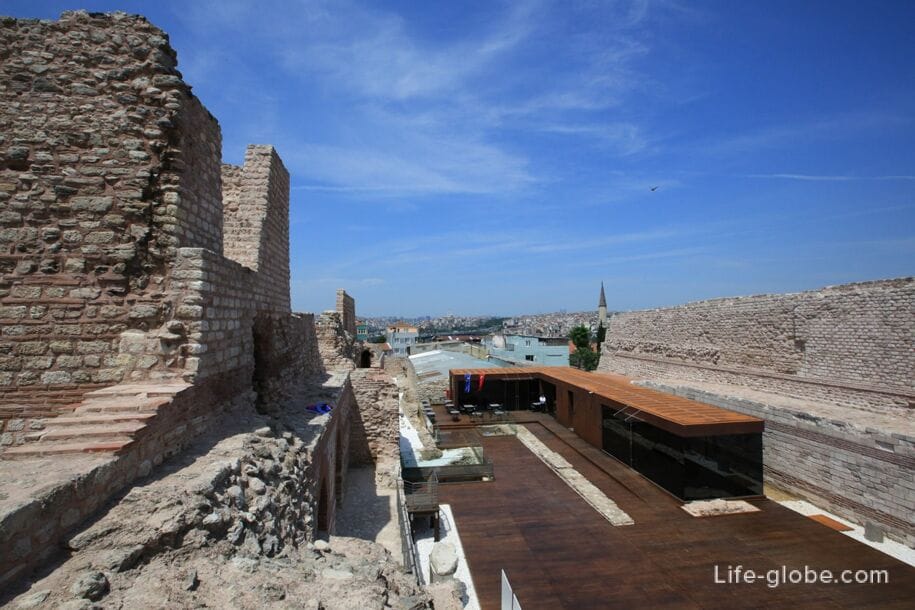
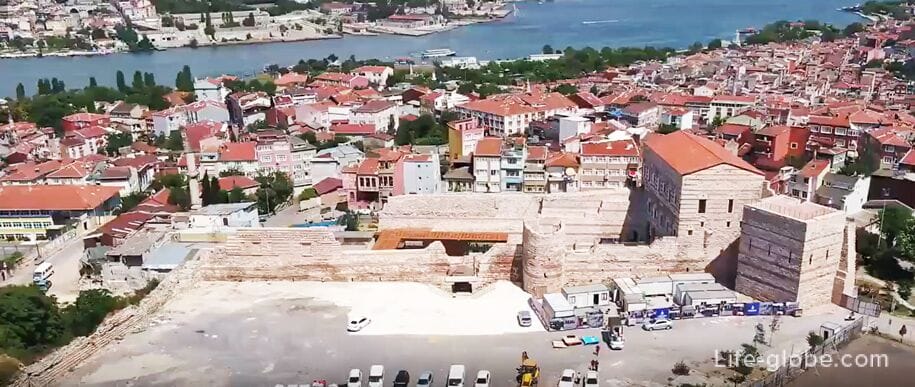
Panorama Museum 1453
The Panorama 1453 Museum (Panorama 1453 Tarih Müzesi) is a history museum with a large panoramic painting depicting the conquest of Constantinople by the troops of the Ottoman Sultan Mehmed the Conqueror on May 29, 1453.
Entrance to the museum is paid.
Museum address: Merkez Efendi Mahallesi, Topkapı Kültür Park Içi Yolu, 34015 Zeytinburnu/Istanbul, Turkey.
The museum's website: panoramikmuze.com.
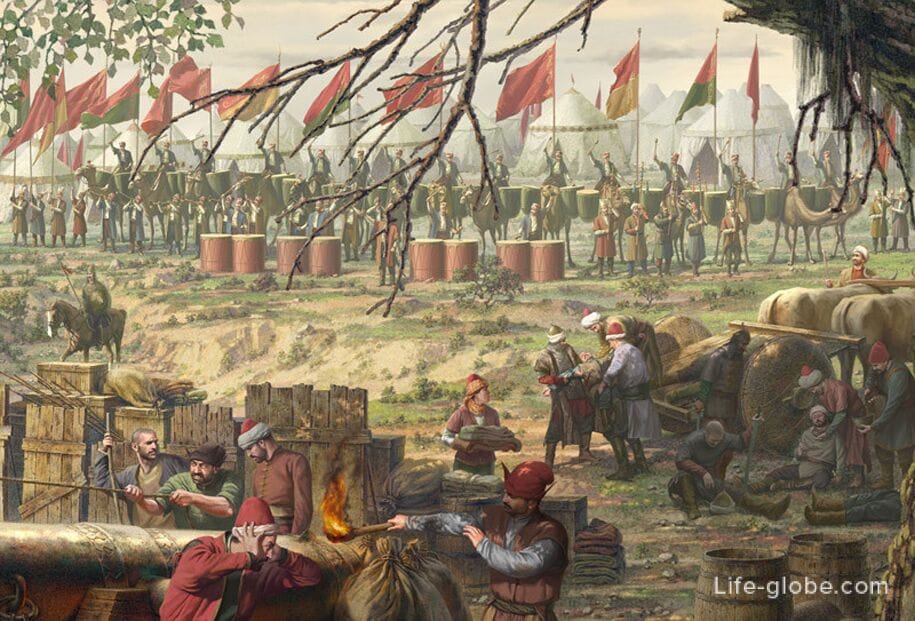
Edikule Fortress (Museum and Golden Gate of Constantinople)
The fortress of Yedikule or Yedikule (Yedikule Hisari), which translates as "fortress of the seven towers" or "dungeon of the seven towers", was built in 1458 under Sultan Mahmed II the Conqueror.
The fortress of seven towers was created by adding three new towers and completely covering a section of the ancient walls of Constantinople, including the Byzantine twin towers and pylons that originally formed the main entrance gate to the city - the Triumphal Golden Gate (Altınkapı), built by the Roman emperors Theodosius I and Theodosius II.
The fortress was created as an official treasury fortress of the Empire, where each of the towers functioned as a repository of precious goods, documents, weapons, coins, gold and silver bars. In the 16th century, the treasury was moved to the inner part of the Topkapi Palace and after that the "Seven Towers" became a prison for high-ranking prisoners.
During the Napoleonic Wars, the fortress was the prison of many French prisoners of war, including the writer and diplomat Francois Pouqueville.
Today, the Yedikule Fortress is a museum of the Yedikule dungeon (Yedikule Hisarı Müzesi).
Yedikule is located near the waters of the Marmara Sea, at the address: Yedikule, Yedikule Meydanı Sk. No: 9, 34107 Fatih/Istanbul, Turkey.
The website of the Yedikule Museum: yedikulehisari.com. Learn more about the towers, fortresses, castles, walls and gates of Istanbul (fortifications of Istanbul)...
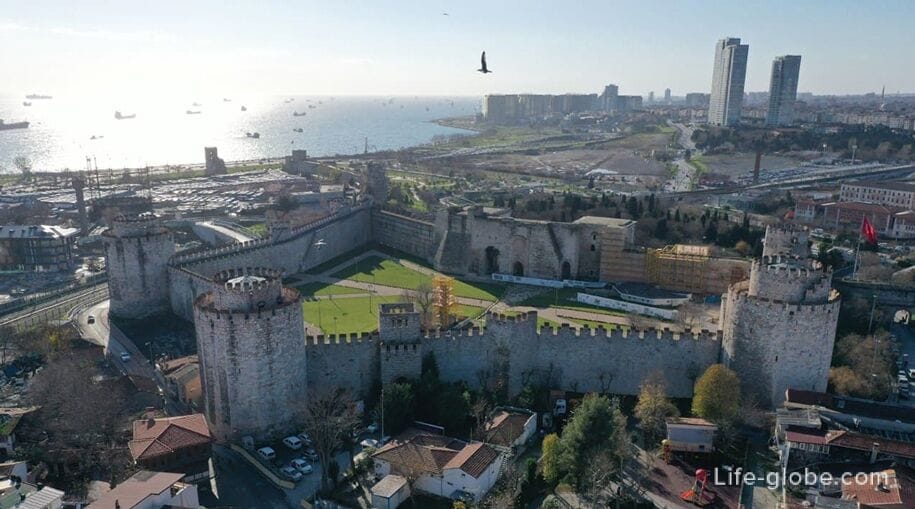
Aviation Museum
The Aviation Museum (Istanbul Hava Kuvvetleri Müzesi) is a family aviation museum with the country's military aircraft and other exhibits, including aircraft models and equipment.
Entrance to the museum is paid.
Museum address: Yeşilköy Mahallesi,, Eski Havaalanı Caddesi,, 34149 Bakırköy/Istanbul, Turkey.
The museum's website: istanbulhavamuze.hvkk.tsk.tr.
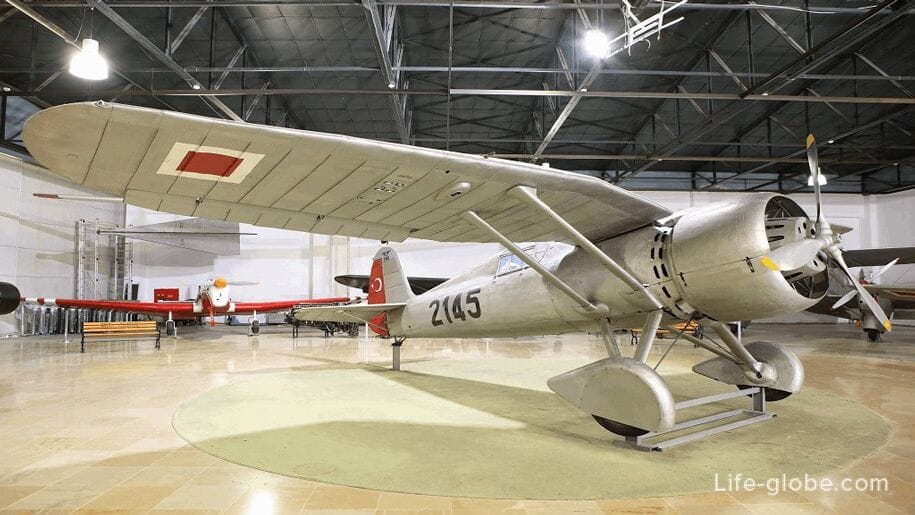
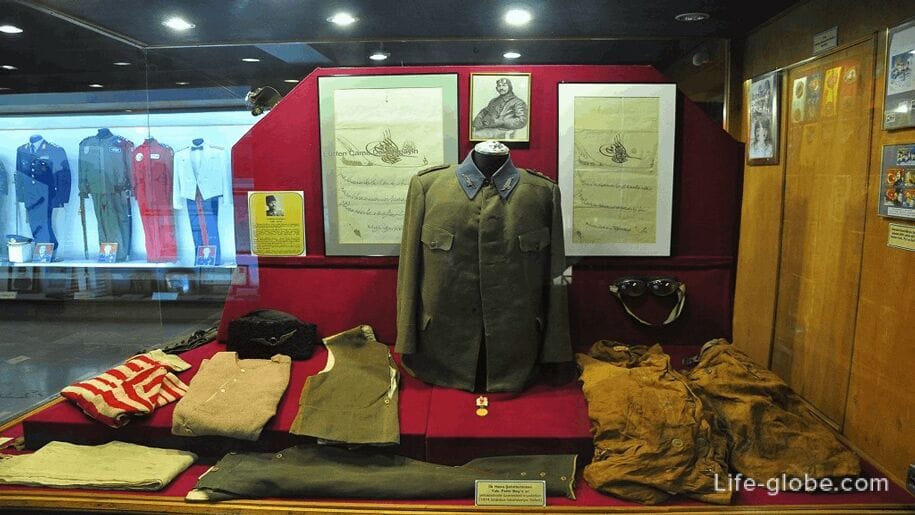
The mansion of the first President of Turkey
The mansion, which bears the name "Ataturk's Seaside Pavilion in Florya" (Florya Ataturk Deniz Köşkü), is the former mansion of the first President of Turkey, Ataturk.
This is a historical presidential residence, which was built in 1935 by the Istanbul Municipality for the recreation of Mustafa Kemal Ataturk.
Today this building is a historical house-museum, where furniture, dishes, personal belongings, as well as a collection of photographs of Ataturk taken at this place are presented.
Entrance to the museum is paid.
The mansion is located on the shore of the Marmara Sea, in the Floria district, at the address: Basınköy, Çekmece Istanbul Cd. No: 23, 34153 Bakırköy/Istanbul, Turkey.
Museum website: florya-ataturk-deniz-kosku-nerede-nasil-gidilir-giris-ucreti.

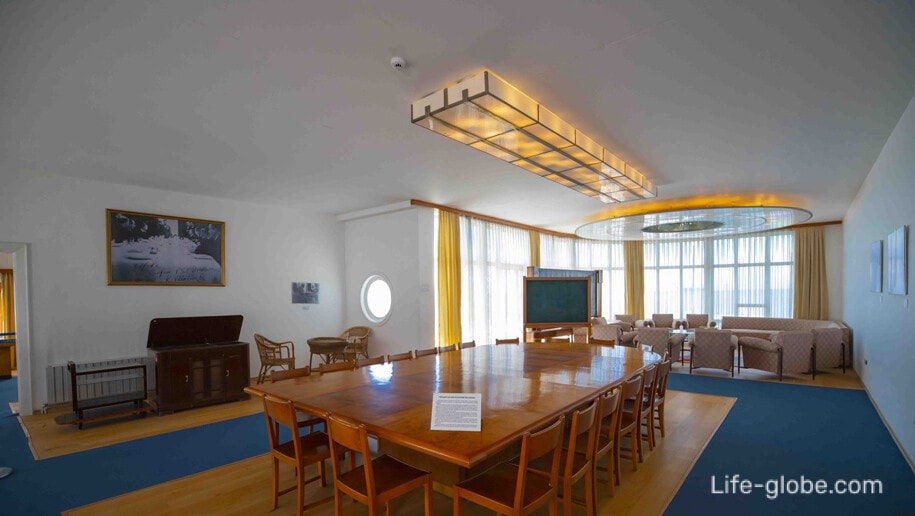
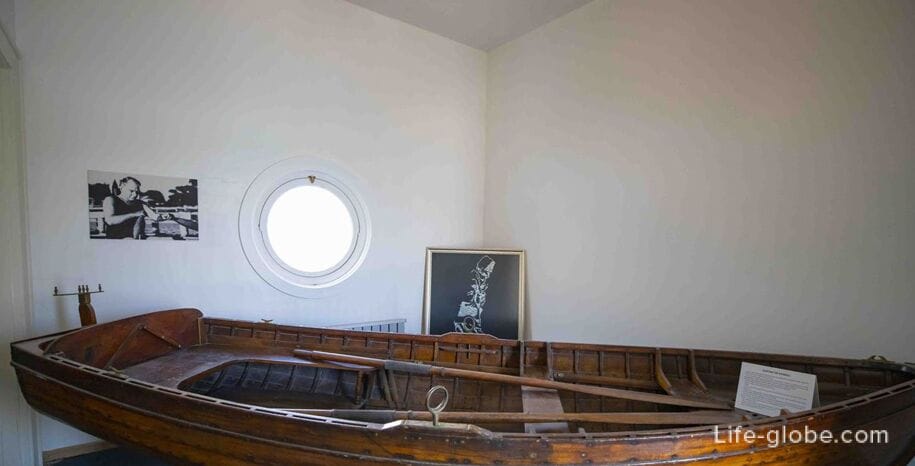
Pelit Chocolate Museum
The Pelit Chocolate Museum, also known as the Pelit Chocolate Museum (Pelit çikolata müzesi) is a museum that began its history in 1957, which contains a collection of figures of famous people, works of art and buildings made of chocolate.
The museum has several halls:
- "Main Hall", which presents: a chocolate waterfall, a life-size chocolate house, Noah's Ark, paintings telling about the history of chocolate, and much more;
- "Istanbul Hall" containing chocolate sculptures - from< a href="https://life-globe.com/en/galata-tower-istanbul/">Galata Tower to The Blue Mosque, from the Maiden Tower to the Bosphorus Bridge and many historical monuments of Istanbul;
- "Hall of Turkish Leaders", which houses chocolate busts of Ataturk, Fatih Sultan Mehmed, Osman Gazi and many other leaders who have left their mark on the history of Turkey;
- The "Hall of Artists", which presents chocolate works by artists who shape world art, including Pablo Picasso and the famous painting by Osman Hamdi Bey "The Turtle Trainer";
- "Hall of Civilizations", in which guests embark on a chocolate journey into the past with paintings depicting civilizations that have left their mark on history, such as the Hittites, Ancient Greece and the Ottoman Empire.
Entrance to the museum is paid.
Museum address: Koza Mahallesi 1678 Sk. No: 19 (Sanayi Mahallesi Evren Sanayi Sitesi Akbatı A.V.M. Arkası) Esenyurt-ISTANBUL.
The museum's website: pelitcikolatamuse.com.
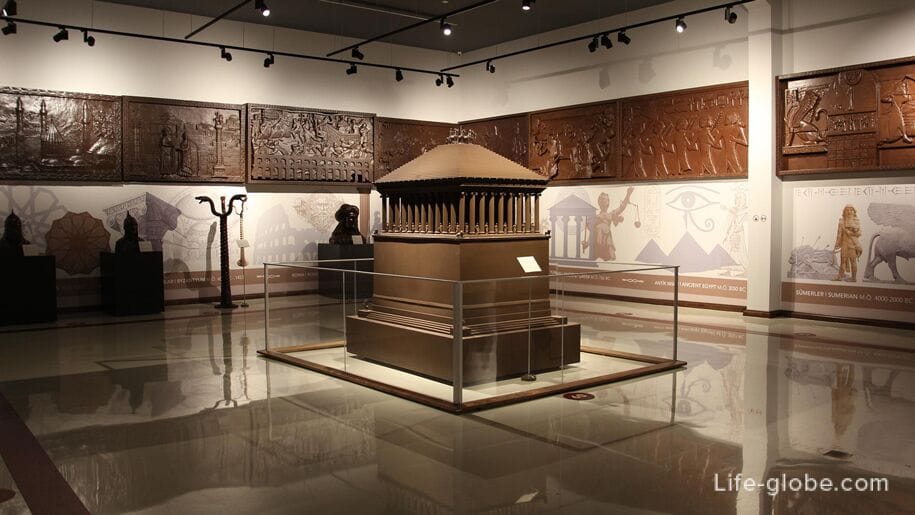
Miniature Park
Miniaturk Park is a theme park created under the slogan "A small model of a big country" in which there are miniature copies of Turkish attractions, from the Blue Mosque and Topkapi Palace to the white terraces of Pamukkale, the temple of Armetida and the Mausoleum of Halicarnassus.
In the park there are miniature models of 136 architectural works, including 60 works from Istanbul, 63 works from Anatolia and 13 works from Ottoman geography outside Turkey, reduced to a factor of 1:25.
Entrance to the park is paid.
The address of the park is: Ernektepe, Imrahor Cd. No: 7, 34445 Beyoğlu/Istanbul, Turkey.
The park's website: miniaturk-istanbul-muzeleri-bilet/488216.
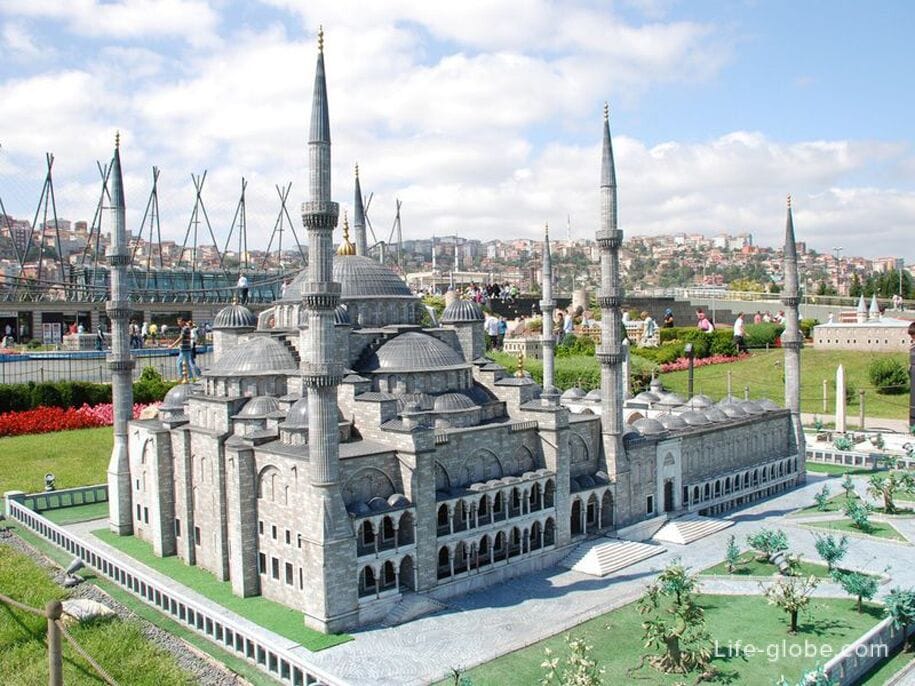
Rahmi Kocha Museum
Rahmi Kocha Museum (Rahmi M. Koç Müzesi) is dedicated to the history of transport, industry and communications with a collection of cars and interactive exhibits.
During the visit, guests of the museum will learn about its founder - Turkish philanthropist, collector and millionaire Rahmi Mustafa Koc, a representative of one of the richest dynasties in Turkey.
The museum's exposition mainly consists of the personal collection of the creator, from ancient gramophone needles to steam locomotives. There are also vintage cars, motorcycles and an Istanbul tram, scientific instruments, toys, models, communications equipment and even an American submarine. And in the practical gallery, you can sit in the cockpit of an airplane, drive an old car, or conduct scientific experiments.
Entrance to the museum is paid.
Museum address: Piri Paşa, Aziz Sk. No:5, 34445 Beyoğlu/Istanbul, Turkey.
The museum's website: rmk-museum.org.tr .
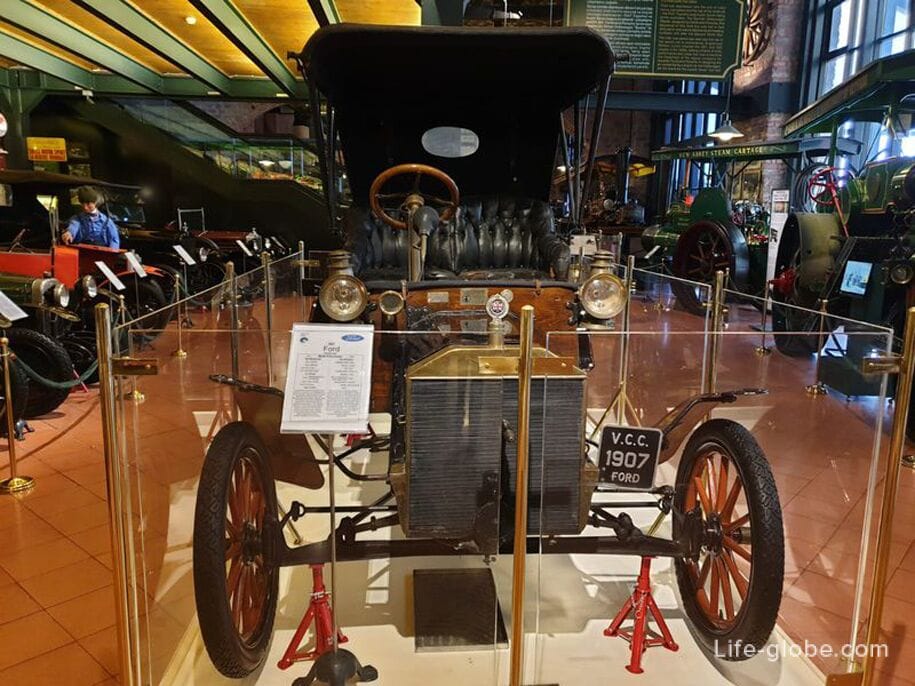
Ainala Kavak Palace Pavilion
Aynaly Kavak or Aynalykavak (Aynalıkavak kasrı), which is also known as the shipyard Palace, is a summer pavilion that has been preserved from the Ottoman Sultan's palace complex and which was considered the fourth largest palace of the Ottoman Empire, after the palaces Topkapi, Dolmabahce and Beylerbeyi.
According to some sources, the construction of structures began during the reign of Mehmed II the Conqueror. Another version says that the complex is identical to the reign of Suleiman the Magnificent. The palace complex included numerous buildings and gardens. Over the course of history, the buildings were supplemented until the complex was destroyed as part of Selim's innovative movements.
Today, the preserved (now restored) Ainalikavak Pavilion is one of the most elegant legacies of classical Ottoman architecture that has survived to the present day.
Within the walls of the palace pavilion there is a museum with beautiful halls.
Entrance to the museum is paid.
Pavilion address: Keçeci Piri, Donanma Cd., 34440 Beyoğlu/Istanbul, Turkey.
Website of the museum-palace: aynalikavak-kasri.

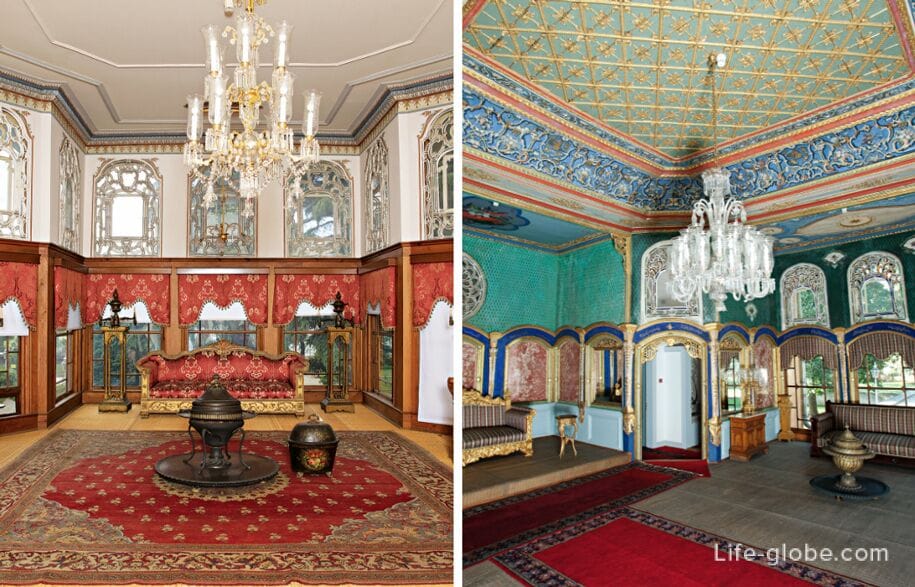
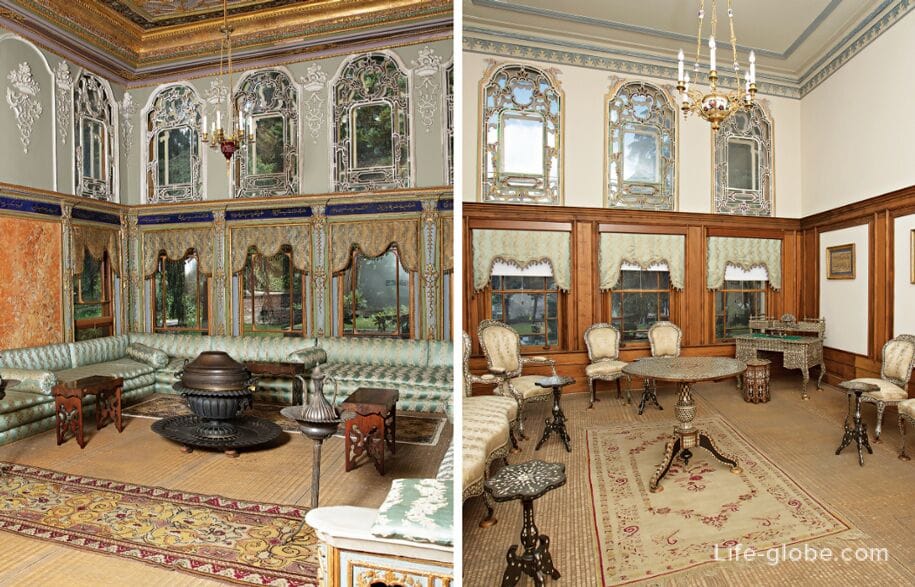
Galata Tower
Galata Tower (Galata Kulesi) is one of the symbols and one of the main attractions of Istanbul.
The tower is accessible to visitors. It houses a museum exhibition, and on the upper levels of the tower there are circular (indoor and outdoor) observation decks, giving beautiful panoramic 360-degree views of Istanbul.
The viewing room is paid.
Galata Tower is located in the historical center of Istanbul, in the Galata quarter of Beyoğlu district, near the main pedestrian street of the city - Istiklal (Istiklal caddesi), at the address: Bereketzade, Galata Kulesi, 34421 Beyoğlu/Istanbul.
Galata Tower website: muze.gov.tr/muze-detay. Learn more about the Galata Tower...

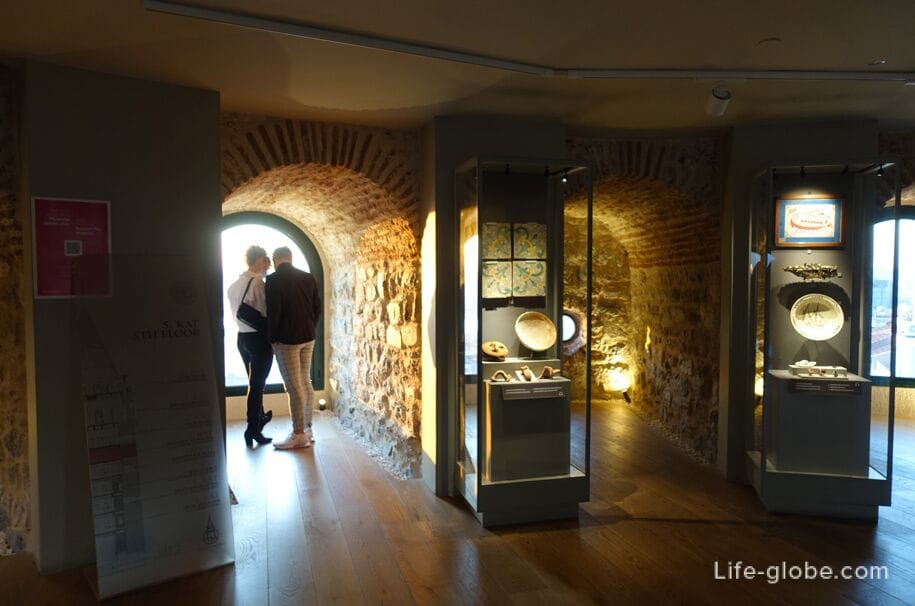
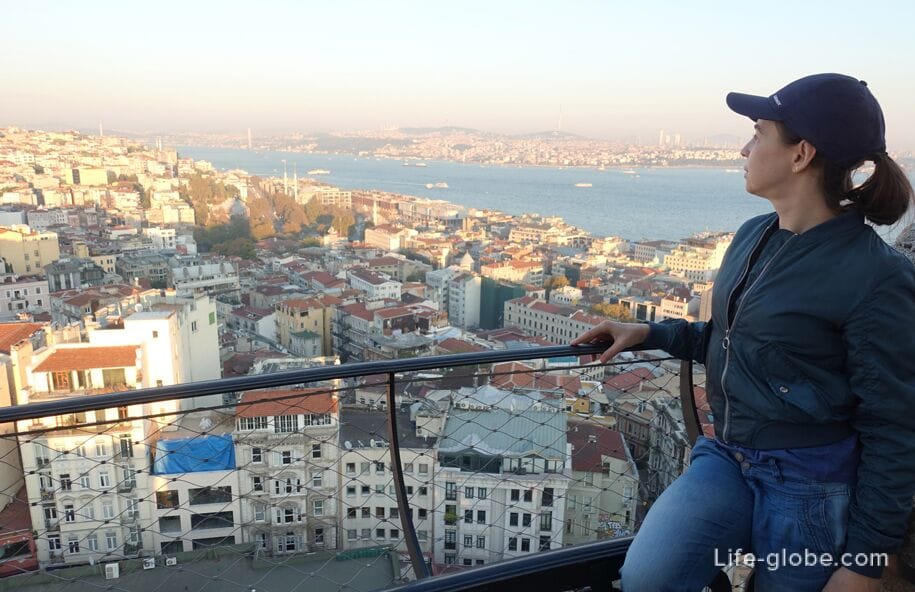
Galata Mevlevikhanesi Museum
Galata Mevlevihanesi Museum (Galata Mevlevihanesi Müzesi) is a museum in a building belonging to a religious movement, where you can see ritual dances dedicated to the culture of dervishes.
Entrance to the museum is paid.
Museum address: Şahkulu, Galip Dede Cd. No: 15, 34420 Beyoğlu/Istanbul, Turkey
The museum's website: muze.gov.tr/muze-detay.

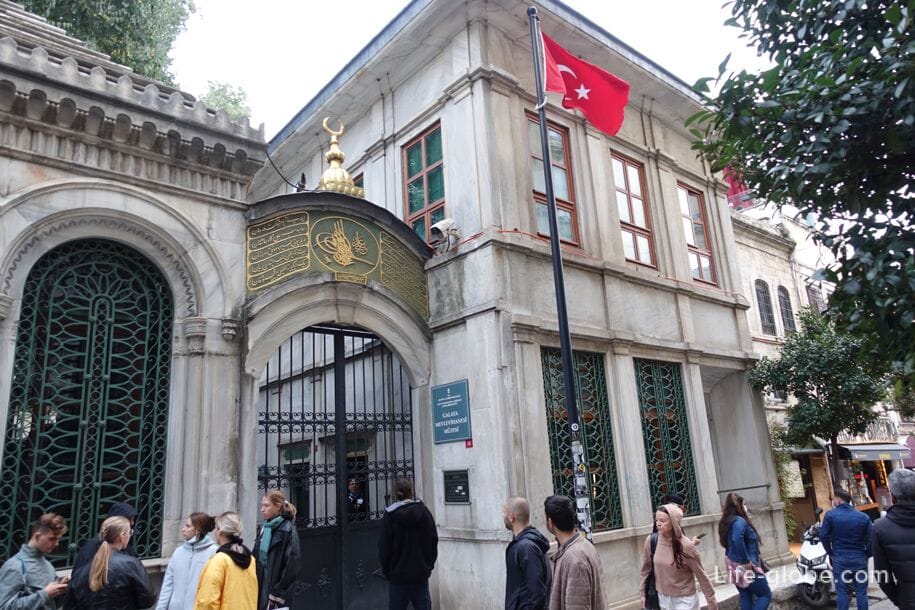
Madame Tussauds Istanbul Museum
In the Madame Tussauds Istanbul Museum, guests will find wax figures: historical and cultural heroes and about 60 famous personalities from the world of art, sports, cinema and politics from the past to the present, including from Turkey and international stars.
Entrance to the museum is paid.
Museum address: Hüseyinağa, Grand Pera AVM, Istiklal Cd. no: 56 D:58, 34440 Beyoğlu/Istanbul, Turkey.
The museum's website: madametussauds.com/istanbul.
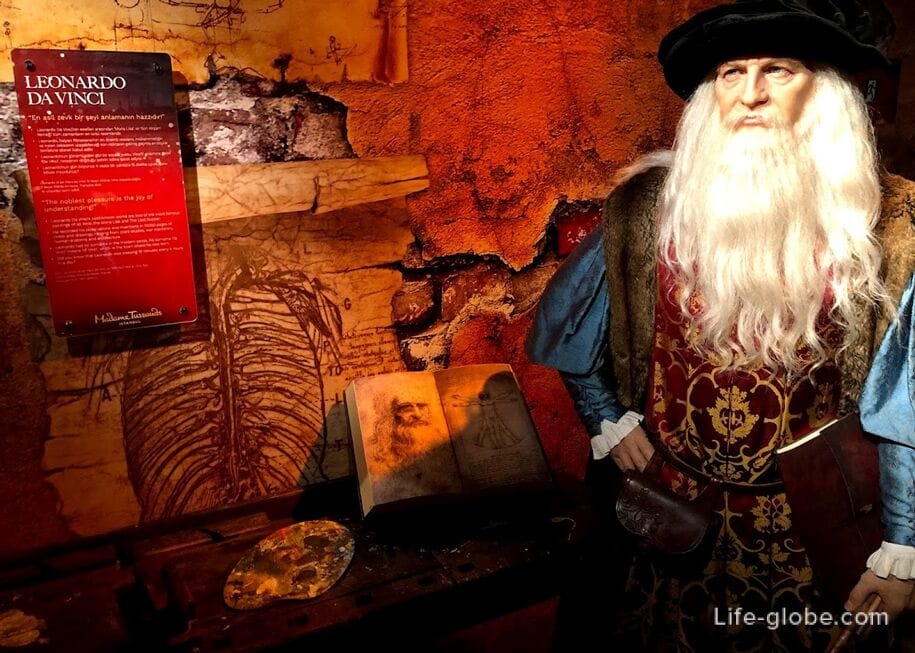
Museum of Jewish Culture in Istanbul
The Museum of Jewish Culture in Istanbul (Quincentennial Foundation Museum of Turkish Jews) is a cultural center created to inform society about the traditions and history of Turkish Jewry and about the historical and cultural relations between Jews and Muslims.
The museum is located in the building of the Zülfaris Synagogue, at the address: Bereketzade, Büyük Hendek Cd. No:39, 34421 Beyoğlu/Istanbul, Turkey.
The museum's website: muze500.com/index.php?lang=en.
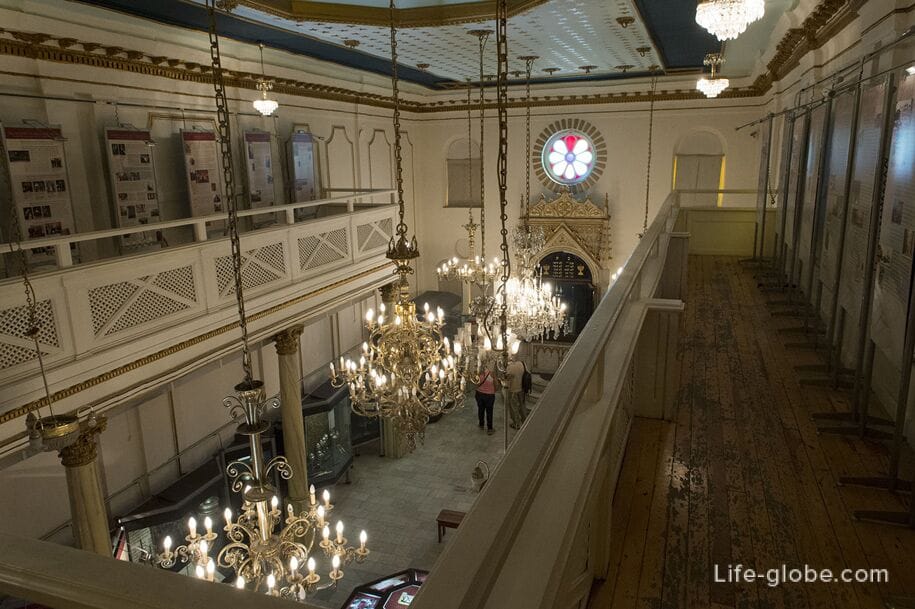
Orhan Kemal Literary Museum
The Orhan Kemal Literary Museum is dedicated to Turkish literature and is named after the writer Orhan Kemal (1914-1970).
The museum presents photographs of Kemal's personal life taken by Ara Guler, family photographs, original first editions of books, personal letters, criticism, articles and dissertations about the writer's works. Orhan Kemal has a typewriter and other personal belongings in his office. The museum also presents a death mask of the writer.
Museum address: Kılıçalipaşa Mahallesi Akarsu Yokuşu Sokak No. 30, 34433 Beyoğlu, Turkey.
The museum's website: orhankemal.org/index.html.

Museum of Innocence
The Museum of Innocence (Masumiyet Müzesi) was opened by the writer Orhan Pamuk and is connected in meaning with Pamuk's novel of the same name.
The museum is located in a historical building, at the address: Firuzağa, Çukurcuma Caddesi, Dalgıç Çk. No: 2, 34425 Beyoğlu/Istanbul, Turkey.
The museum's website: masumiyetmuzesi.org.
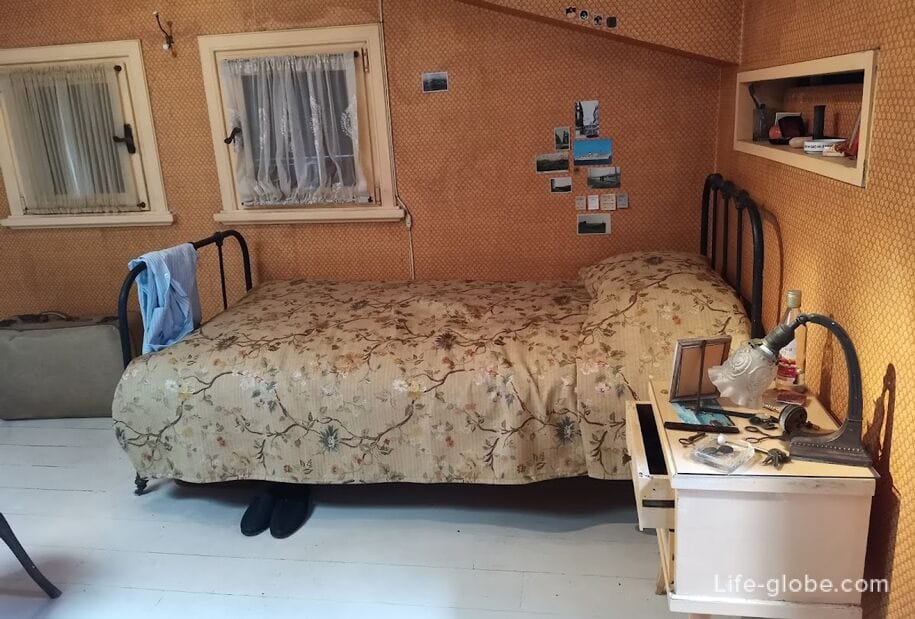
Museum of the Ottoman Bank
The Museum of the Ottoman Bank (Osmanlı Bankası Müzesi) is a small museum with an underground money vault, telling about the Ottoman Bank.
Address Museum: Arap Cami Mahallesi, Bankalar Caddesi No. 11, Karaköy;
The museum is located on Bankalar Caddesi Street, which was the financial center of the Ottoman Empire.

SALT Galata Cultural Center
The SALT Galata Cultural Center hosts exhibitions, scientific conferences, and seminars. There is also a cafe with a terrace and a library with access to the former bank vault.
The building of the center itself is an architectural monument erected at the end of the 19th century under the direction of architect Alexander Vallori and modernized with the help of the architectural bureau Mimarlar Tasarym.
The address of the center: Azapkapı, Bankalar Cd. No: 11, 34420 Beyoğlu/Istanbul, Turkey.
The center's website: saltonline.org.
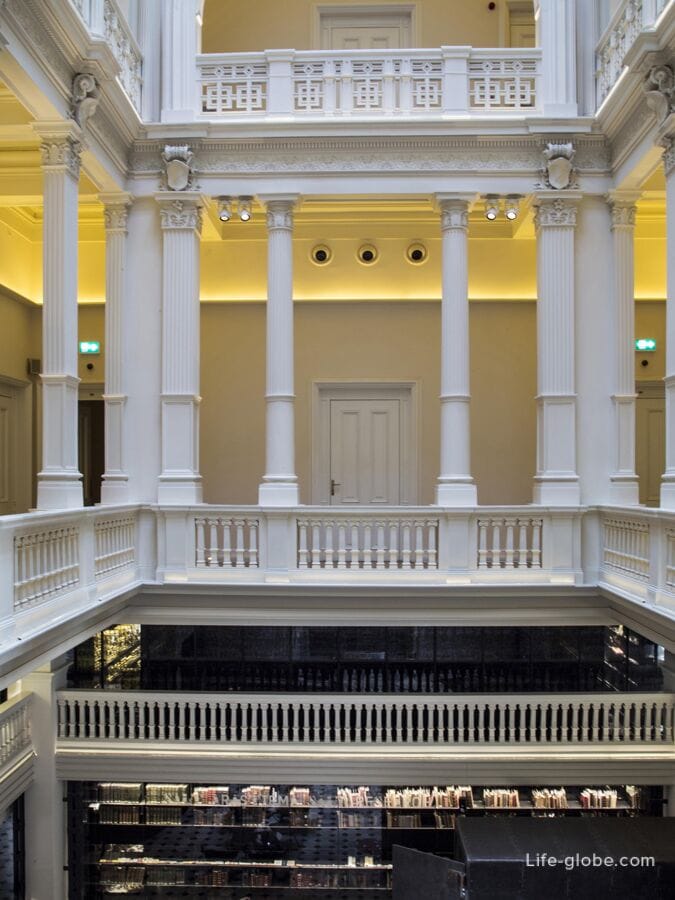
Istanbul Museum of Modern Art
Istanbul Museum of Modern Art (Istanbul Modern Sanat Müzesi, Istanbul Modern) is an art museum where modernist and contemporary art by Turkish and foreign authors are presented, as well as there is a cinema, library, shop and cafe.
On the upper floor of the museum there is an exposition of the permanent collection, rooms for educational programs, a shop and a restaurant, and the lower floor is used for temporary exhibitions, a modern cinema "Istanbul" and a library.
The permanent collection features works by a wide range of artists from Turkey and also works by foreign artists.
Museum address: Asmalı Mescit, Meşrutiyet Cd. No: 99, 34430 Beyoğlu/Istanbul, Turkey.
The museum's website: istanbulmodern.org.
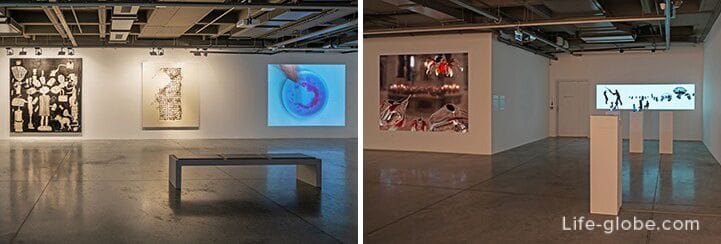
Pen Museum
The Pera Muzesi Museum is an art museum located in the elegant building of the former Bristol Hotel, designed by architect Achille Manoussos and built in 1893.
The museum exhibits paintings and ceramics, temporary exhibitions of works by modern masters are held.
The museum pays special attention to orientalism in the art of the 19th century.
The museum's collection of Oriental paintings consists of works by European and Ottoman/Turkish artists, including works by Osman Hamdi Bey and his most famous painting "The Turtle Trainer".
The Anatolian collection of weights and measures includes more than ten thousand copies and consists of items from prehistoric times to those used in modern Anatolia. These include the main types of scales and measuring instruments used to measure weight, length and volume in every field, from land measurement to trade, from architecture to jewelry making, from delivery to pharmacy.
The collections of tiles and ceramics date back to the Kutahya Foundation of Suna and Inan Kiracha (1980s). Today the collection consists of more than 800 items representing various periods, especially the 18th and 20th centuries.
Museum address: Asmalı Mescit, Meşrutiyet Cd. No: 65, 34430 Beyoğlu/Istanbul, Turkey.
The museum's website: peramuzesi.org.tr.
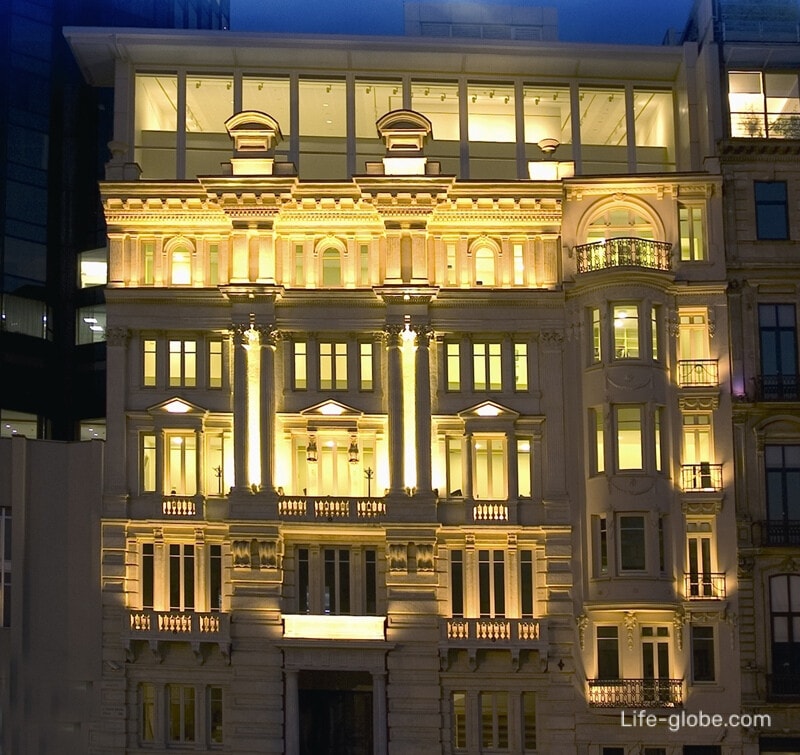
Doganchai Museum
The Doganchay Museum (Doğançay Müzesi) is an art museum located in a historic building with an exhibition of works by the Turkish artist and photographer Burhan Doganchay.
This is a mini-retrospective that covers five decades of Doganchai's artistic evolution, starting with his early figurative paintings and ending with photographs. The works of his father Adil Doganchai are exhibited in one hall of the museum.
Museum address: Hüseyinağa, Balo Sk. No: 42, 34435 Beyoğlu/Istanbul, Turkey.
The museum's website: dogancaymuseum.org.
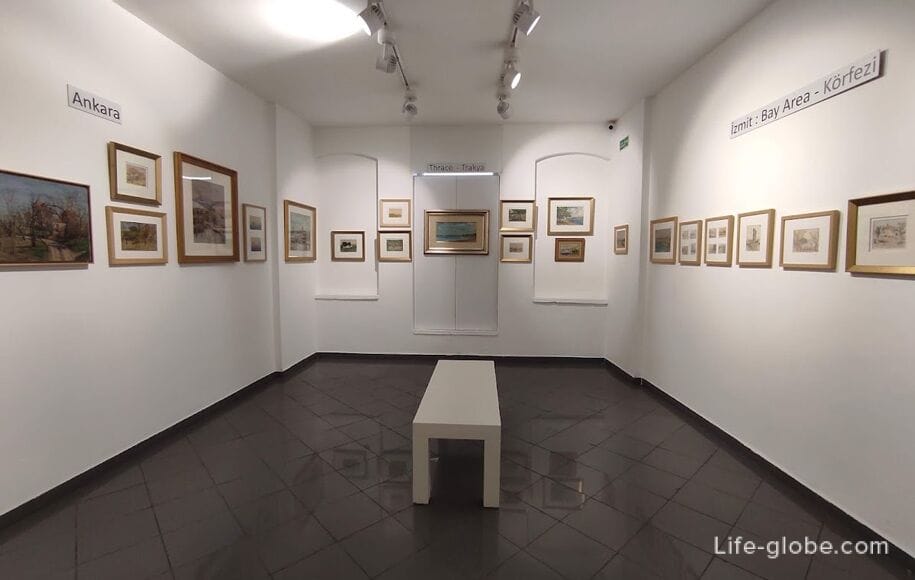
The Museum of the Poet Adam Mickiewicz
Adam Mickiewicz Museum (Şair Adam Mickiewicz Müzesi) is a memorial house-museum dedicated to the memory of the life of the famous Polish poet Adam Mickiewicz.
Adam Mickiewicz lived and died in the museum house. The poet arrived in Istanbul in September 1855 to help organize a Polish regiment of the Ottoman Army to fight the Russian Empire during the Crimean War. He became friends with Mikhail Tchaikovsky (Sadik Pasha), who commanded the Polish troops.
On November 8, 1855, Adam Mickiewicz, Armand Levy and Henrik Sluzalski rented a small house from Mrs. Rudnitskaya, where the poet spent his last days. The room was simple and sparse. The poet himself considered this room temporary before a planned trip to the Balkans. Nevertheless, it was here that he died of illness on November 26, 1855.
The house burned down in a fire in March 1870 and in the same year the Polish aristocrat Jozef Ratynski bought this land from the municipality of Istanbul. Ratynsky built a reconstruction of the first house on the site, exactly the same as the one that burned down.
The museum in the house was opened in 1955. The crypt in which Mickiewicz was temporarily buried is located in the basement, and Adam Mickiewicz's manuscripts, historical documents and paintings are also kept in the museum.
Museum address: Bostan, Tatlı Badem Sk. No: 10, 34435 Beyoğlu/Istanbul, Turkey.
The museum's website: muze.gov.tr/muze-detay .
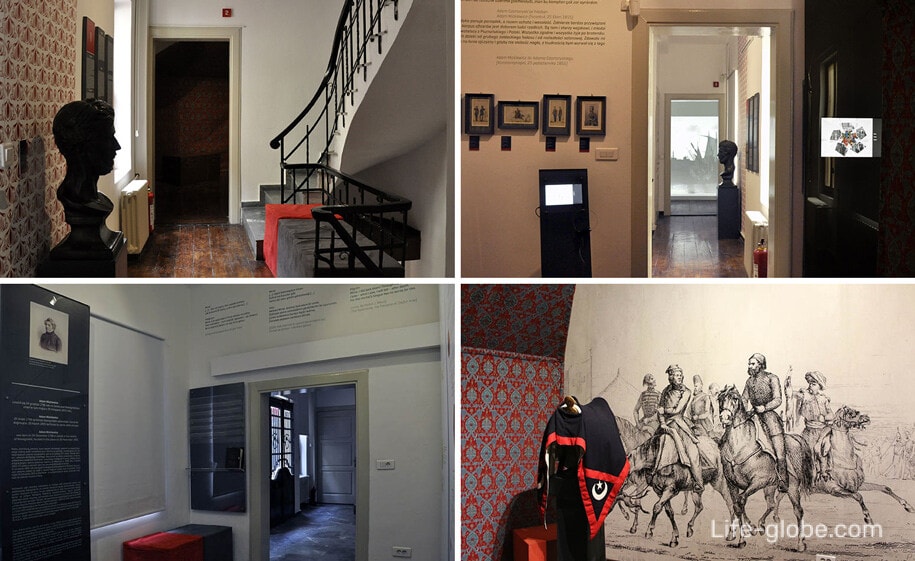
Museum of Modern Art VKV
The Museum of Contemporary Art of the Vehbi Koc Foundation (VKV Çağdaş Sanat Müzesi) is a cultural and educational center where temporary exhibitions and various events in the context of contemporary art are held throughout the year, in addition to the collection of contemporary art of the Vehbi Koc Foundation.
Center address: Yenişehir, Irmak Cd., 34435 Beyoğlu/Istanbul, Turkey.
The center's website: vkv.org.tr/haber_detay.aspx?hl=tr&id=107.
Dolmabahce Palace
Dolmabahce (Dolmabahçe Sarayı) is a magnificent palace complex of the 19th century, which served as the residence of the Ottoman sultans, and today is one of the most visited sights of Istanbul.
Dolmabahce Palace was built in 1843-1853 by order and for Sultan Abdul-Majid I, who considered the Topkapi Palace operating at that time to be out of date, and wanted to erect a new palace for permanent residence, which in architecture and luxury would not be inferior to the exquisite European residences of influential people.
Today, the Dolmabahce Palace is a Museum where you can visit the garden overlooking the waters of the Bosphorus Palace rooms, consisting of: official public part of the "Selamlik" (Selamlık) with function hall (Tören Salonu), Harem (the Harem), or the family part of it; and the clock Museum and the Museum of painting and sculpture (Resim ve Heykel Müzesi).
Entrance to the palace is paid.
Palace address: Vişnezade, Dolmabahçe Cd., 34357 Beşiktaş/Istanbul, Turkey.
Dolmabahce Palace website: dolmabahce-sarayi. More about Dolmabahce Palace...
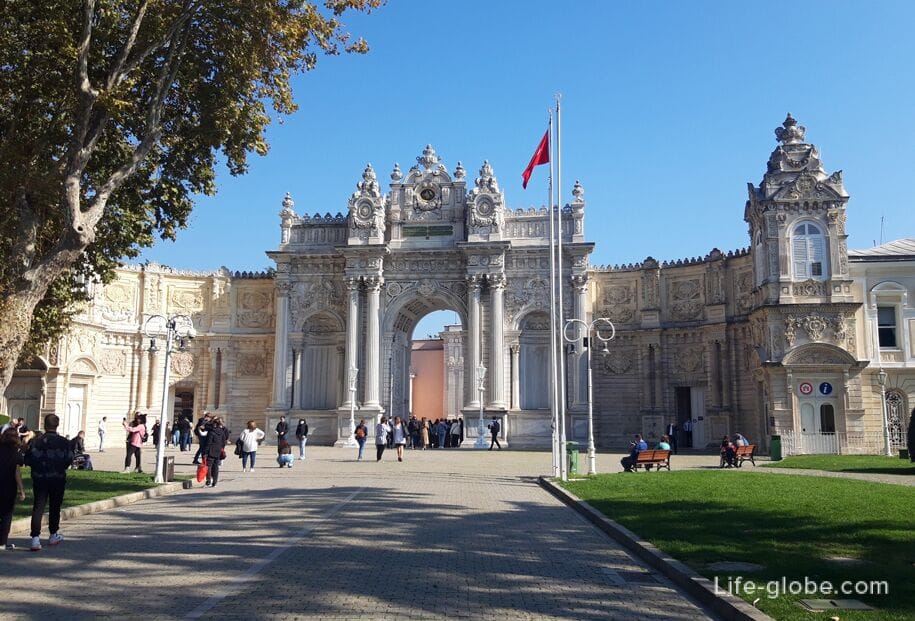

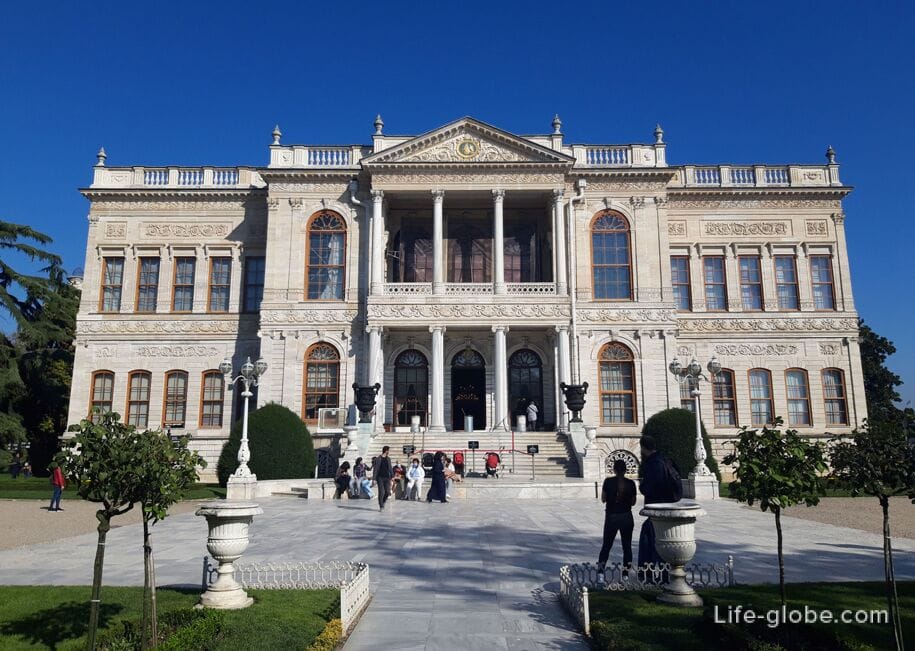
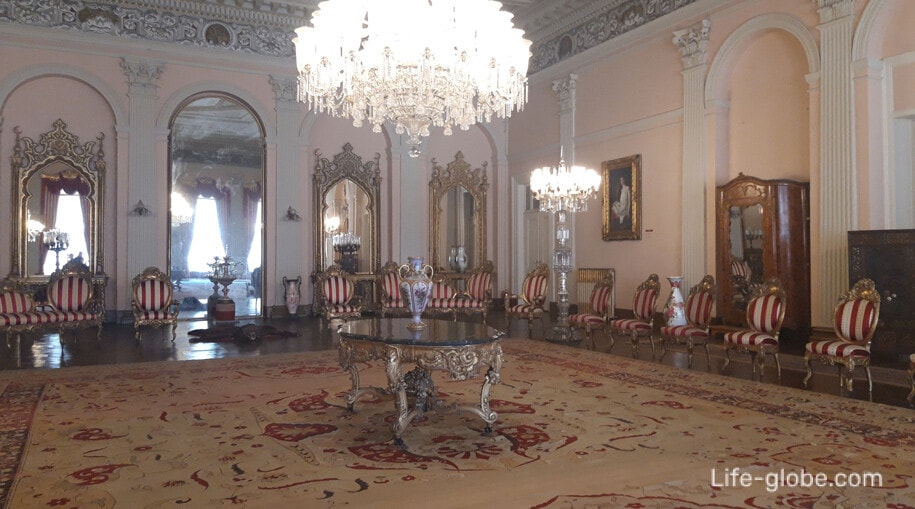
Museum of Palace Collections
The Museum of Palace Collections (Saray Koleksiyonları Müzesi) is located in the building of the former kitchens of the Dolmabahce Palace and was created by transferring about 20,000 items that the visitor could not see in the furnished rooms of the Dolmabahce Palace.
The main theme of the Museum of Palace Collections is to identify original objects that were used in everyday life in the Ottoman palaces of the 19th century, especially in the Dolmabahce Palace, and in the inventory of national palaces, and make them open to visitors.
Among the exhibited objects: clothing princes and princesses, toys, Handicrafts, stationery used by the sultans, print, epitaphs, samples writing utensils used in the Parliament and the first Grand national Assembly of Turkey, medication, dentist office, shaving sets of silver belonging to the sultans, equipment for cleaning and maintenance Valide-Sultanov, dishes made of crystal, porcelain and silver, manuscripts of the Koran, carpets Hereke, porcelain Yildiz, watches, porcelain furnace, books from the Palace library, drawing tools and materials belonging to the Caliph Abdulmecid Efendi, a collection of oil paintings, lighting and decorative tools.
Entrance to the museum is paid. It is paid separately from the entrance to the Dolmabahce Palace.
Museum address: Vişnezade, Dolmabahçe Cd., 34357 Beşiktaş/Istanbul, Turkey.
Museum website: saray-koleksiyonlari-muzesi.
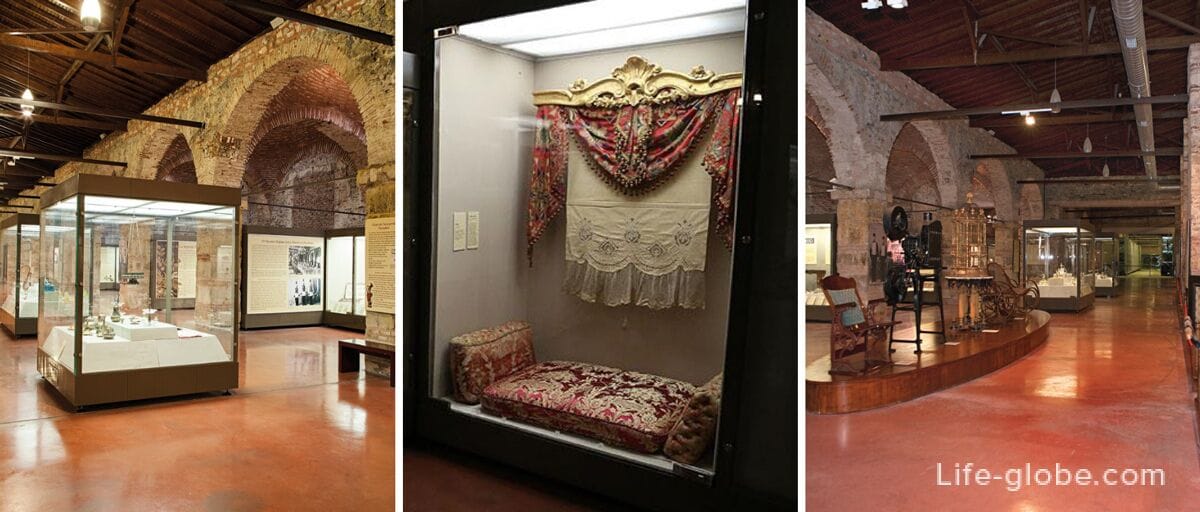
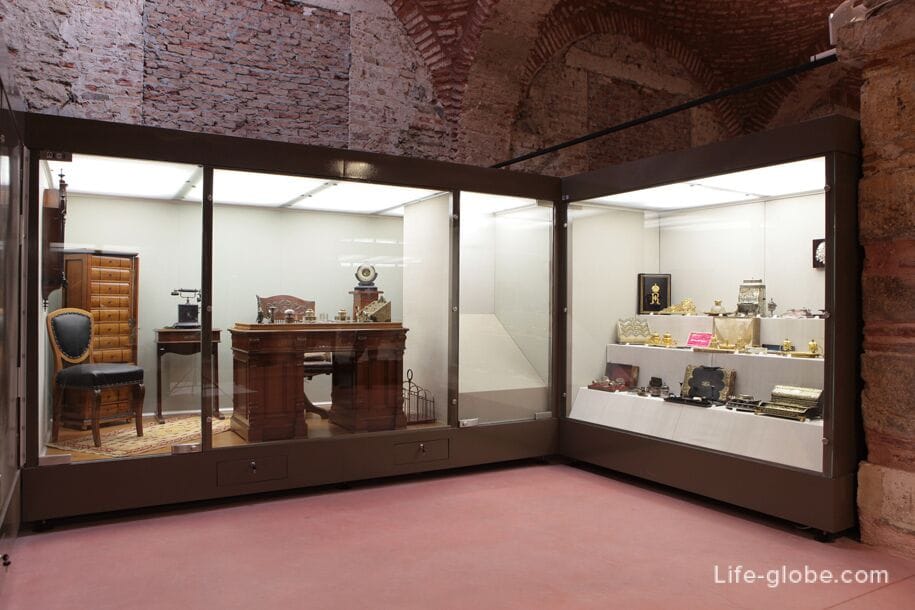
Naval Museum
The Naval Museum (Deniz Müzesi) is a museum of the history of Turkish navigation, where ships of the Ottoman era and ancient diving equipment are presented.
The museum is the most outstanding naval museum in Turkey, and by the richness of its collections it is one of the outstanding museums in the world.
Museum address: Sinanpaşa, Beşiktaş Cd. No: 6 D:1, 34353 Beşiktaş/Istanbul, Turkey.
The museum's website: denizmuzesi.dzkk.tsk.tr/en .
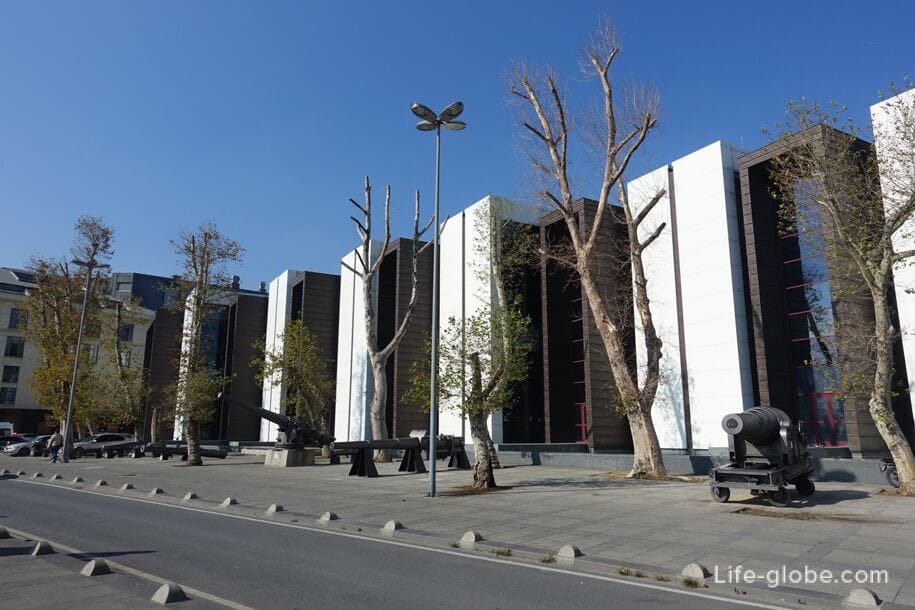
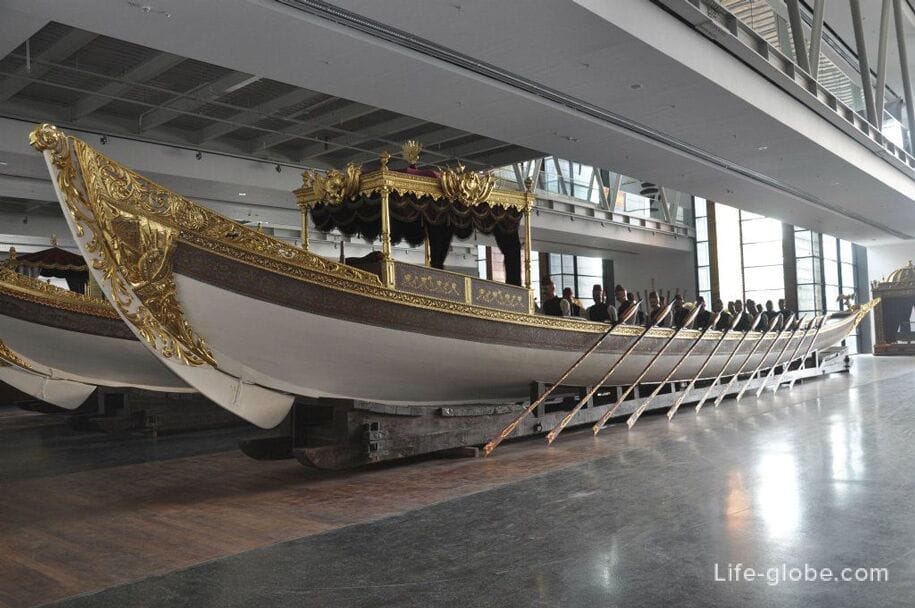
Yildiz Porcelain Factory
The current historical porcelain factory Yildiz (Yıldız Çini Ve Porselen Fabrikası) was opened in 1895 and produced ceramics to meet the needs of the upper class in the European style. The factory produced bowls, vases and plates, which often depicted a view of the Bosphorus. The building had a look reminiscent of medieval castles.
Entrance to the museum-factory is paid. Website: yildiz-cini-ve-porselen-fabrikasi.
The factory is located on the outskirts of the Yıldız Palace and Park complex. More about Yildiz Palace and Park...

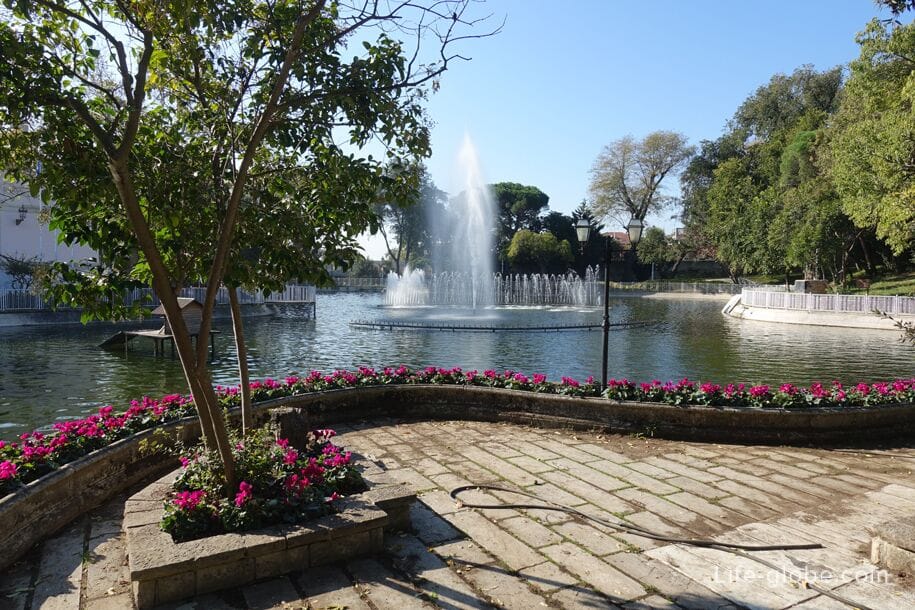
The Ylamur Complex
Ihlamur (Ihlamur Kasrı) is a former summer residence of the sultans of the Ottoman Empire, used for recreation, and built in 1849-1855 by order of Sultan Abdul-Majid I.
It was a small palace complex consisting of two buildings: a ceremonial or ceremonial (Merasim Köşkü, Merasim) and private chambers or harem (Maiyet Köşkü, Mayet).
Bright features and spectacular neo-Baroque decorations are visible in the architecture, which makes the complex one of the most elegant examples of Ottoman buildings of the 19th century.
Today it is a museum with an interior palace decoration with halls and rooms and the surrounding garden and forest area with a lake.
Entrance to the park and museum is paid.
Address of the complex: Teşvikiye, Nişantaşı Ihlamur Yolu Sk., 34357 Şişli/Istanbul, Turkey.
Museum website: ihlamur-kasirlari.

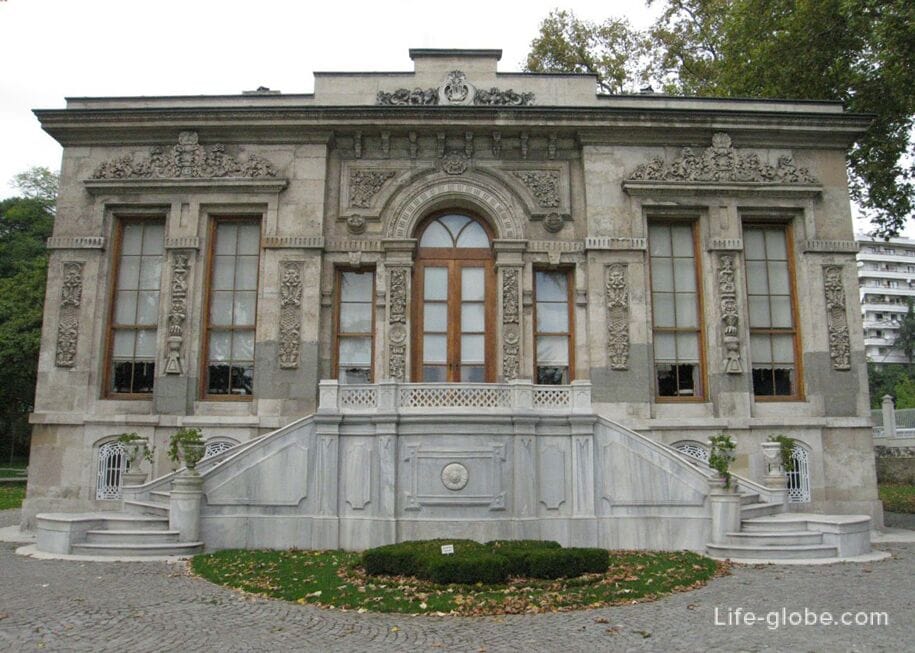
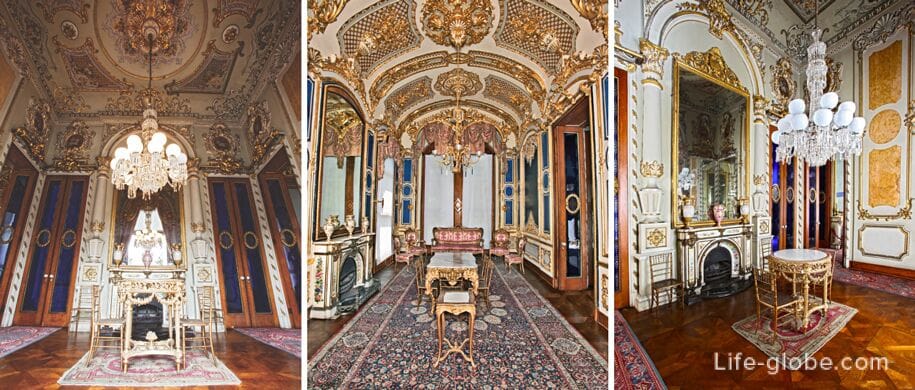
Ashiyan Museum
The Ashiyan Museum (Aşiyan Müzesi) is the house of the famous Turkish poet and philosopher Tevfik Fikret, built in 1906 and later converted into a literary museum.
Museum address: Bebek, Aşiyan Yolu, 34342 Beşiktaş/Istanbul, Turkey.
The museum's website: ataturkkitapligi.ibb.gov.tr.
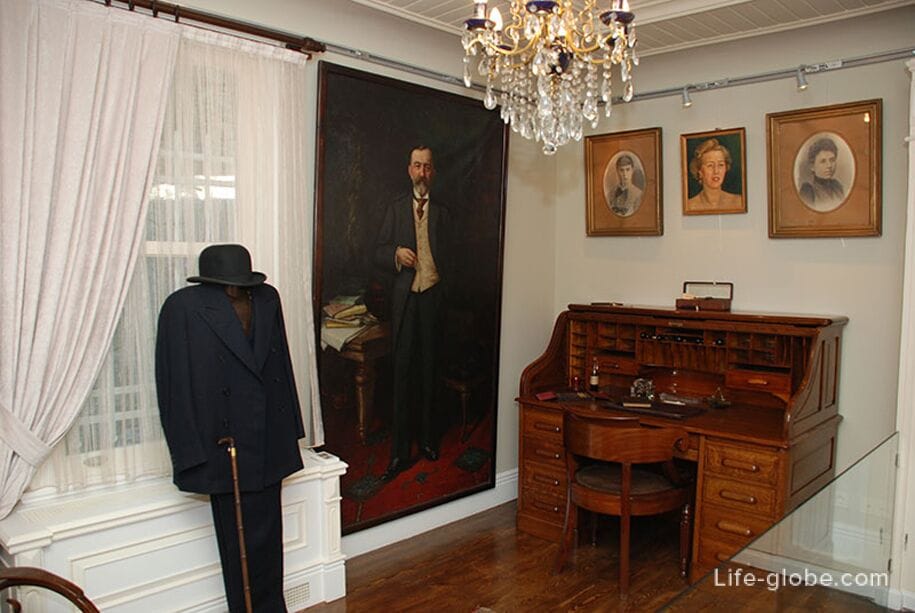
Rumelikhisar Fortress
Rumeli Hisarı (Rumeli Hisarı) is a medieval fortress built in 1452, which is now a museum, occupies an area of 30 hectares, surrounded by defensive walls with towers and gates.
There are hiking trails on the territory of the fortress, there is a functioning mosque and a small cistern. The fortress offers panoramic views of the Bosphorus, Sultan Mehmed Fatih Bridge and the Asian part of the city.
Entrance to the fortress is paid.
Fortress address: Rumeli Hisarı Yahya Kemal Caddesi No.:42 34470 Sariyer/ISTANBUL.
Website of the Fortress Museum: muze.gen.tr/muze-detay/rumeli. More about the Rumelikhisar Fortress...

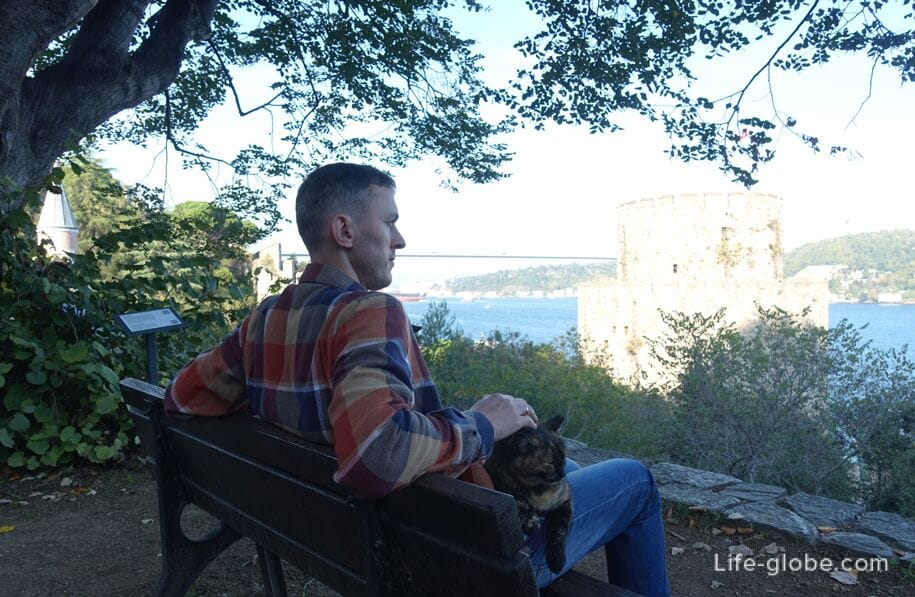
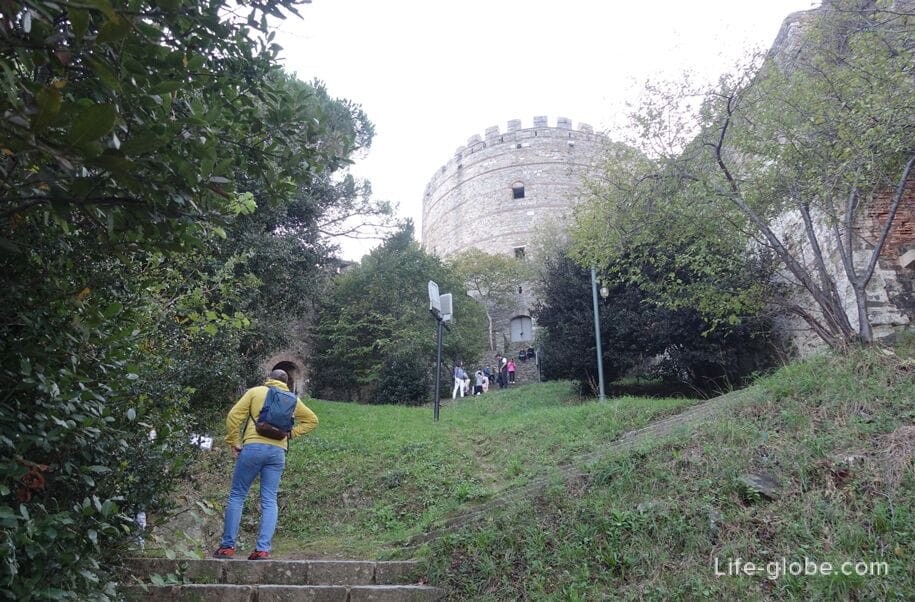
Istanbul Military Museum
The Istanbul Military Museum (Harbiye Askeri Muze ve Kültür Sitesi Komutanlığı) tells about the Turkic military history from the first ancestors of the Turks up to modern Turkey.
This museum is one of the leading museums of its kind in the world. The museum is located in a monumental historical building.
The museum consists of more than 20 halls in which exhibits of historical weapons, uniforms, tools of various periods of the army, camping tents, standards, etc. are exhibited.
In addition to the permanent exhibition, temporary exhibitions and seminars are held in the museum.
In the square in front of the museum there are tanks, artillery pieces, planes dedicated to the Turkish military history.
Museum address: Halaskargazi, Vali Konağı Cd. No: 2, 34367 Şişli/Istanbul, Turkey.
The museum's website: askerimuze.msb.gov.tr.
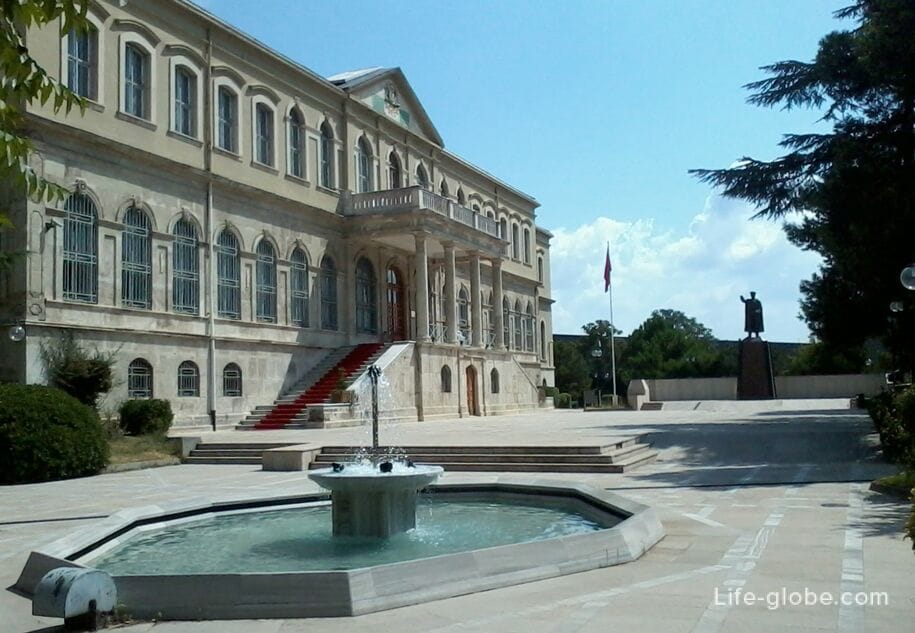
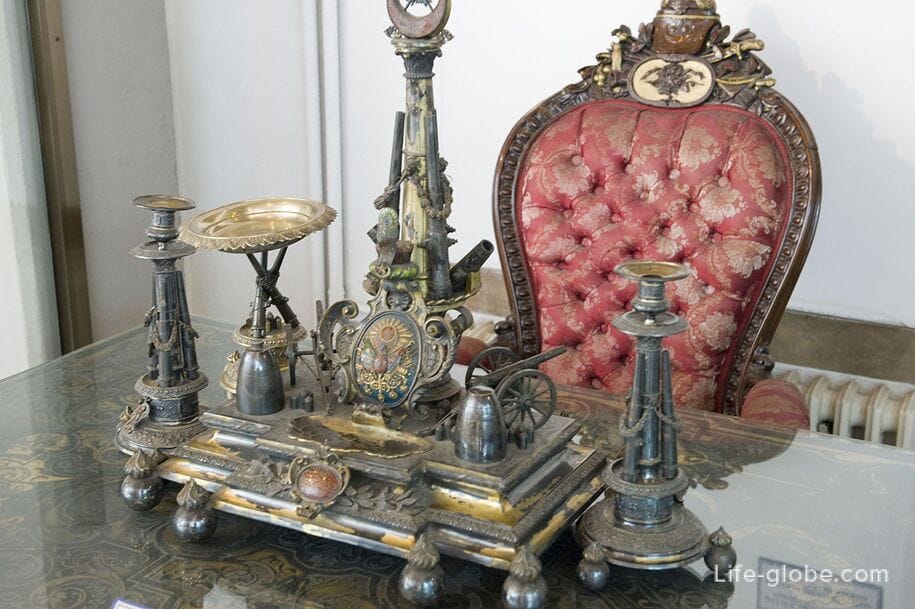
Ataturk House Museum
The Ataturk House Museum (Atatürk Müzesi) is a museum dedicated to the life of the first president of Turkey - Mustafa Kemal Ataturk.
The museum is located in a historic three-storey house built in 1908, which Mustafa Kemal rented after returning from the Syrian Front and lived there with his mother, sister and adopted son until May 16, 1919, the day when he sailed on the ship "Bandyrma" to Samsun, on his way to the headquarters of the Inspection of troops of the 9th Army in Erzurum.
The house where some of Ataturk's personal belongings were kept was bought by Istanbul Municipality in 1928 and transformed into a museum, opened to visitors on June 15, 1942 as the Ataturk Revolution Museum.
The museum presents Ataturk's personal belongings, such as clothes; there are collections with paintings, medals and other exhibits.
Address of the house-museum: Meşrutiyet, Halaskargazi Cd. No: 140, 34363 Şişli/Istanbul, Turkey.
Website: ataturk-muzeleri.html.
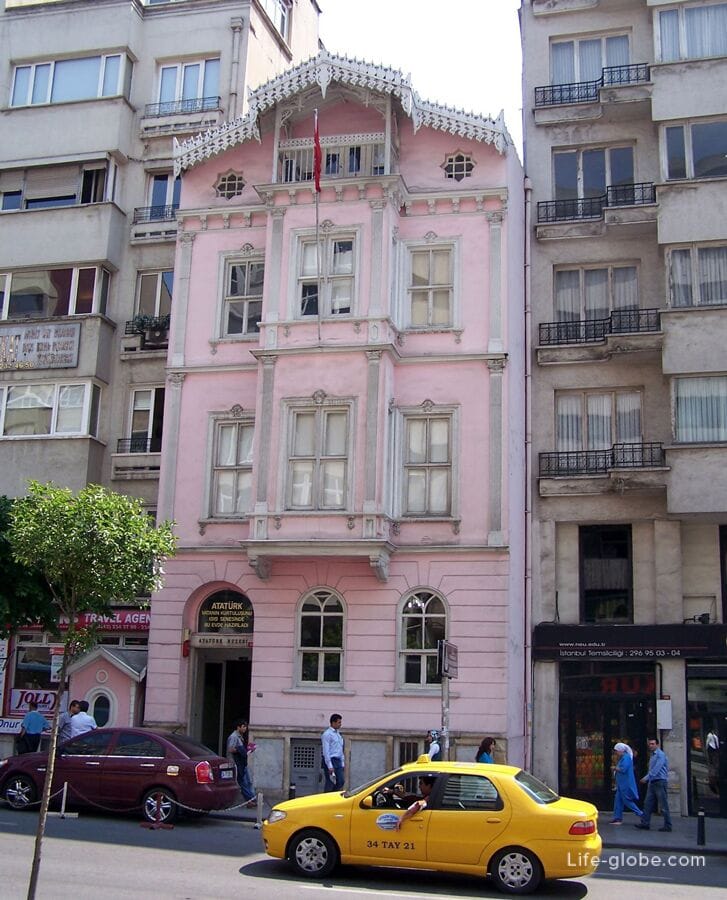
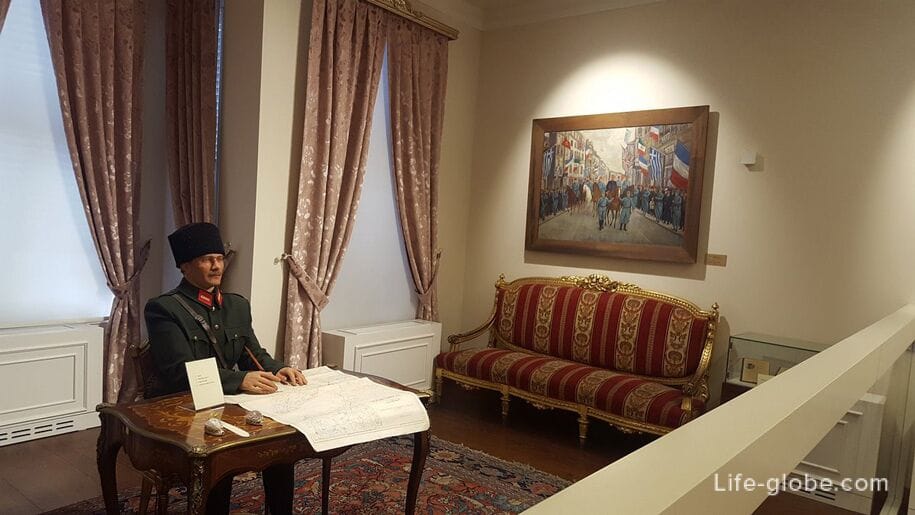
Museum of Military History
The Museum of Military History (Hisart Canlı Tarih ve Diorama Müzesi) is a museum of military history and cultural heritage of the Ottoman Empire of 1453-1923.
The museum exhibits military and ethnographic historical artifacts of the Ottoman period of 1453-1923, as well as dioramas and mannequins depicting the corresponding periods of history.
Museum address: Hürriyet Mah. Cemil Bengü Cad. No: 21 34403 Çağlayan / İstanbul / Türkiye.
The museum's website: hisartmuseum.com/tr.
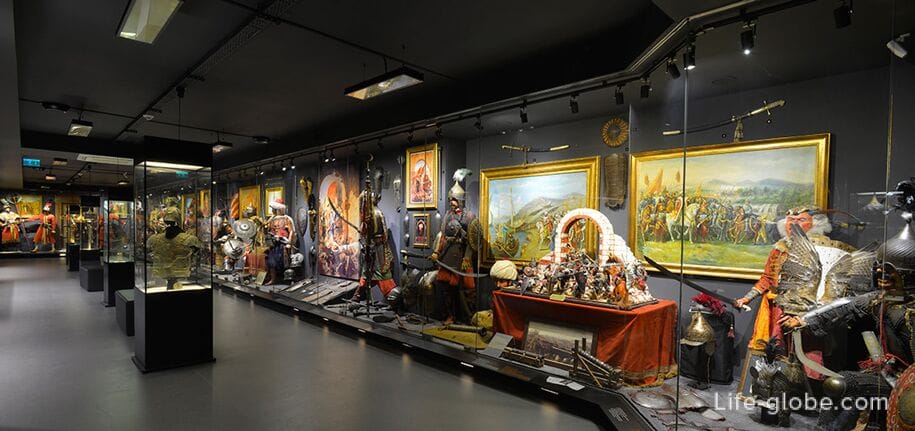


Bozlu Art Gallery
The Bozlu Art Project is located in the historic Mongeri Building, built in the mid-1920s by Italian-born architect Giulio Mongeri.
The gallery exhibits paintings by prominent figures of contemporary art in Turkey and works by young promising artists. It also hosts events such as exhibitions and talks about art.
Gallery address: 19 Mayıs, Mongeri Binası, Dr. Şevket Bey Sk. No: 5, 34360 Şişli/Istanbul, Turkey.
Gallery website: bozluartproject.com.
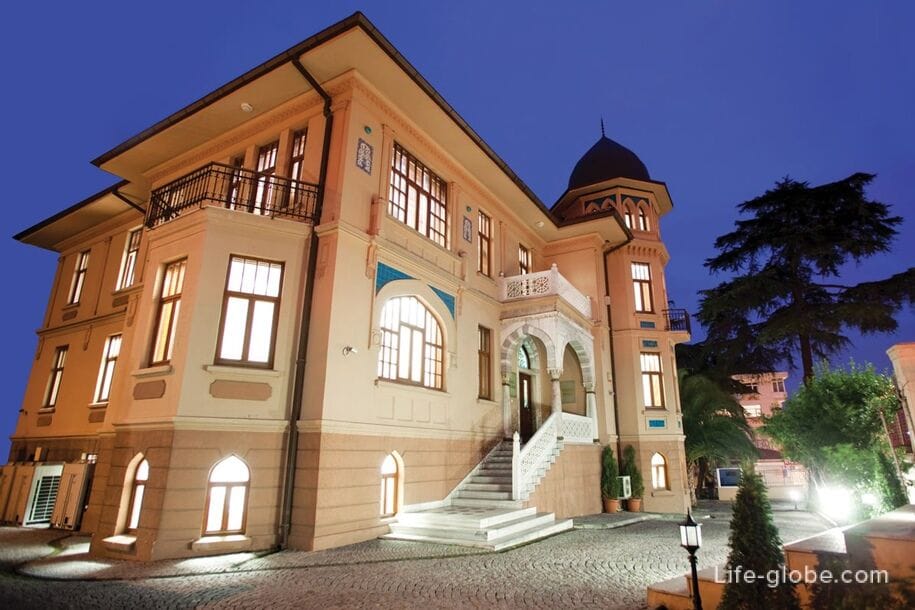
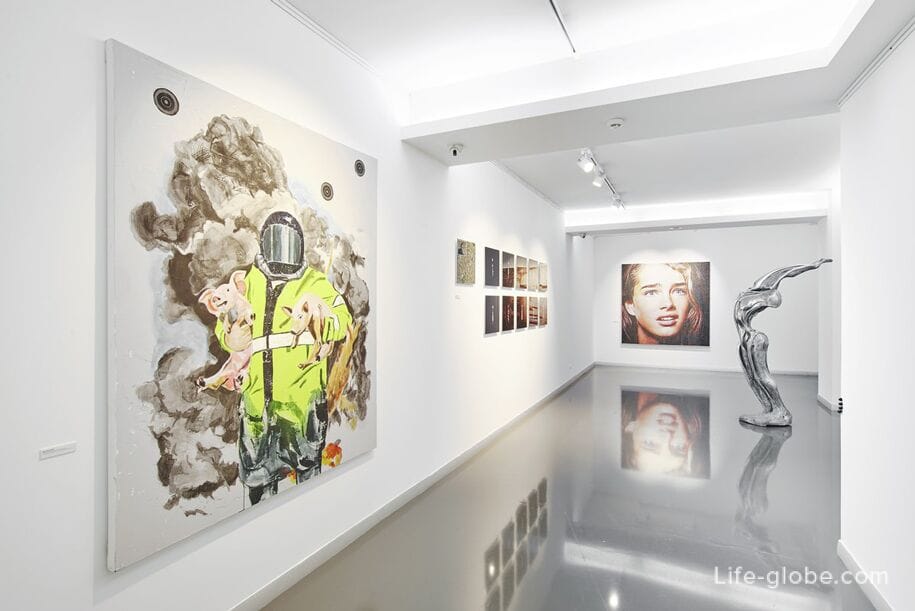
Ara Guler Museum
Ara Güler Museum (Ara Güler Müzesi) is an archive of photographs of Turkish-Armenian journalist, photojournalist and writer Ara Güler (Ara Güler, 1928-2018), whose career spans 70 years.
The museum is located in a building that was created by the renovation and transformation of four vaulted buildings in the historic campus of the Bomonti Brewery.
Museum address: Yapı Kredi Bomontiada, Ara Güler Müzesi Tarihi Bomontiada Bira Fabrikası, Birahane Sk. No: 1, 34381 Şişli, Turkey.
The museum's website: aragulermuzesi.com.
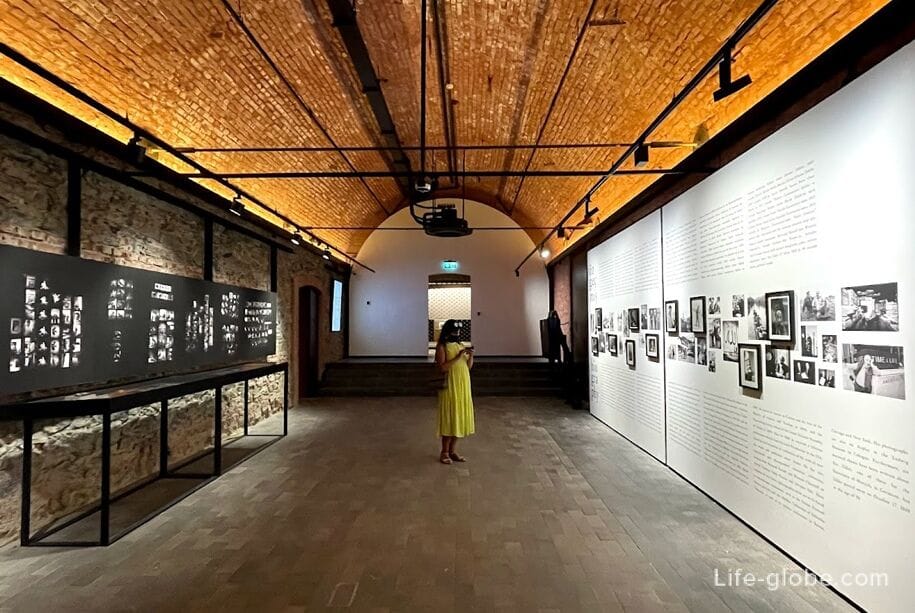
Sakyp Sabanji Museum
The Sakıp Sabancı Muzesi Museum is a museum of fine arts at Sabancı University, located in a historic mansion of the 19th century, where temporary and permanent exhibitions of Islamic calligraphy samples, paintings by Turkish painters, sculptures, some personal belongings of the Sabancı family, as well as documents of the state and religious history of the Ottoman era are presented.
The museum was founded by Turkish entrepreneur Sakyp Sabanji.
Museum Address: Sakıp Sabancı Caddesi No: 42 Emirgan 34467 Istanbul.
The museum's website: sakipsabancimuzesi.org.


Maslak Pavilions
Maslak (Maslak Kasırları) is a former palace complex consisting of a garden and pavilions, and was used as a hunting residence and a resting place of the sultans of the Ottoman Empire.
The palace complex was built under Sultan Mahmud II, and various additions, including buildings, were made during the reign of Sultan Abdul-Aziz.
Some of the structures of the palace complex have survived to the present day, while others have been demolished.
Among the many buildings of the complex, only Mabeyn-i Humayun, Kasrsi Humayun, Limonluk Kulkhani, Agalar's Office and a Tent Villa have survived to this day.
Today it is a museum with a cafe and a restaurant.
Entrance to the museum is paid.
The address of the pavilions: Darüşşafaka, Büyükdere Cd., 34398 Sarıyer/Istanbul, Turkey.
Website of the pavilion Museum: maslak-kasirlari.
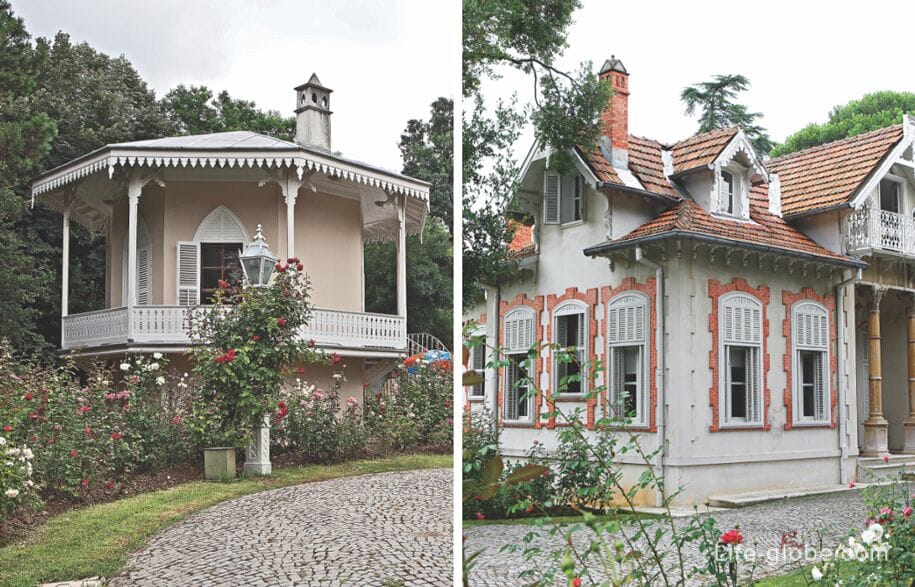


Classic Car Museum
In the museum of classic cars (Ural Ataman Klasik Otomobil Müzesi) vintage cars are collected and there is a cafe in the spirit of the 1950s in the center of the exposition.
Museum address: Ferahevler, Nuri Paşa Cd. No: 107, 34457 Sarıyer/Istanbul, Turkey.
The museum's website: atamanmuseum.com.

Sadberk Khanim Museum
Sadberk Hanım Muzesi Museum with a private collection of ancient artifacts from the Ottoman Empire, paintings and furniture.
The museum was created by the Vehbi Koch Foundation in memory of the late wife of Vehbi Koch Sadberk.
The museum occupies two separate buildings of charming 19th-century wooden villas in European style.
Address Museum: Piyasa Caddesi No: 25/29 Büyükdere 34453 Sariyer - ISTANBUL.
The museum's website: sadberkhanimmuzesi.org.tr/en.
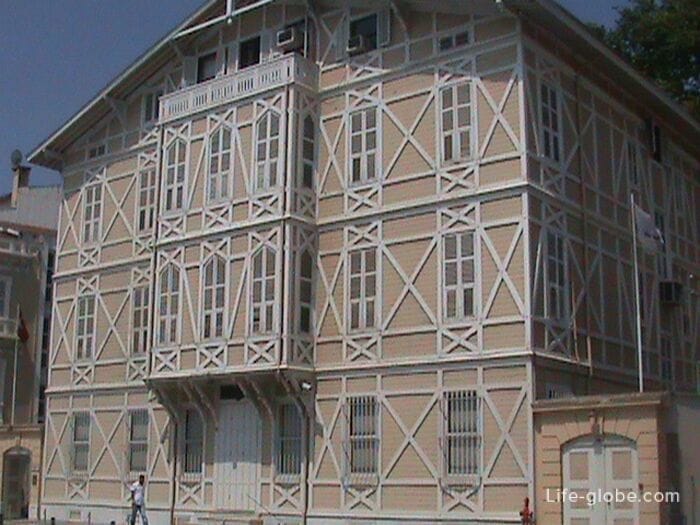
Avraham Pasha Pavilion (Beykoz Glass and Crystal Museum)
Today's Beykoz Glass and Crystal Museum (Beykoz Cam ve Billur Müzesi) is located in a restored historical barn building of the former residence of Abraham Pasha, who was a confidant of the Egyptian Khedive Ismail Pasha and received the title of vizier from Sultan Abdulaziz.
The building, bearing the architectural features of the 19th century, is a modular structure based on the duplication of similar spaces surrounding the courtyard in a U-shape, and its facades are enlivened by round arched openings on the lower floor.
The building houses museum spaces with masonry and a Western-style structure, where developments of Turkish and European glass, porcelain and crystal are presented in 12 sections.
Entrance to the museum is paid.
The museum is located in the Asian part of Istanbul (like all the museums listed below), at the address: Merkez, Mehmet Yavuz Cd. No: 115, 34820 Beykoz/Istanbul, Turkey.
Museum website: beykoz-cam-muzesi.
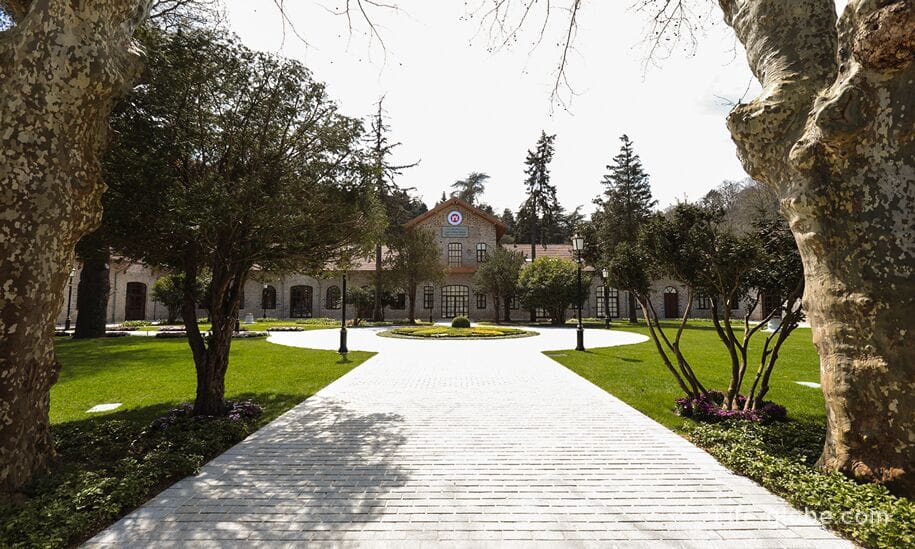
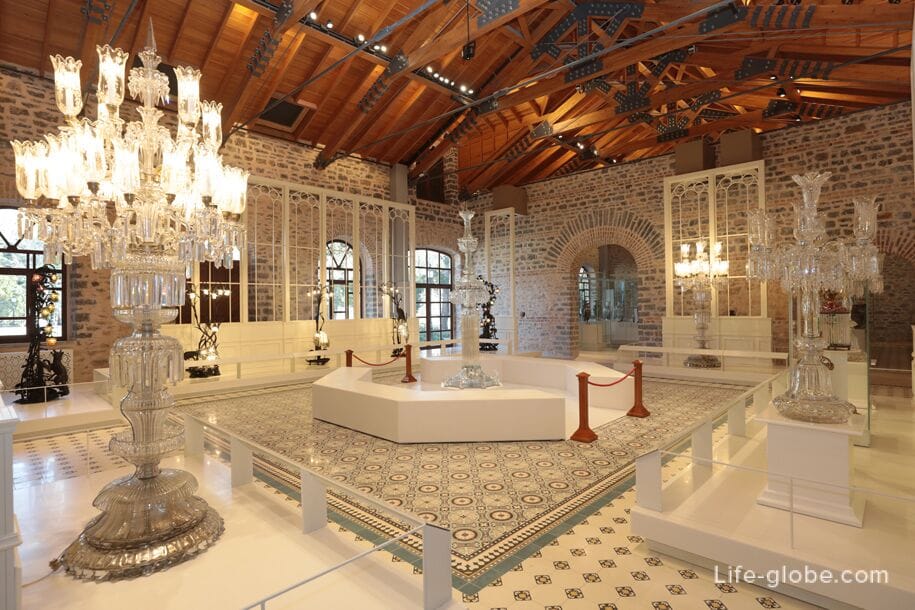

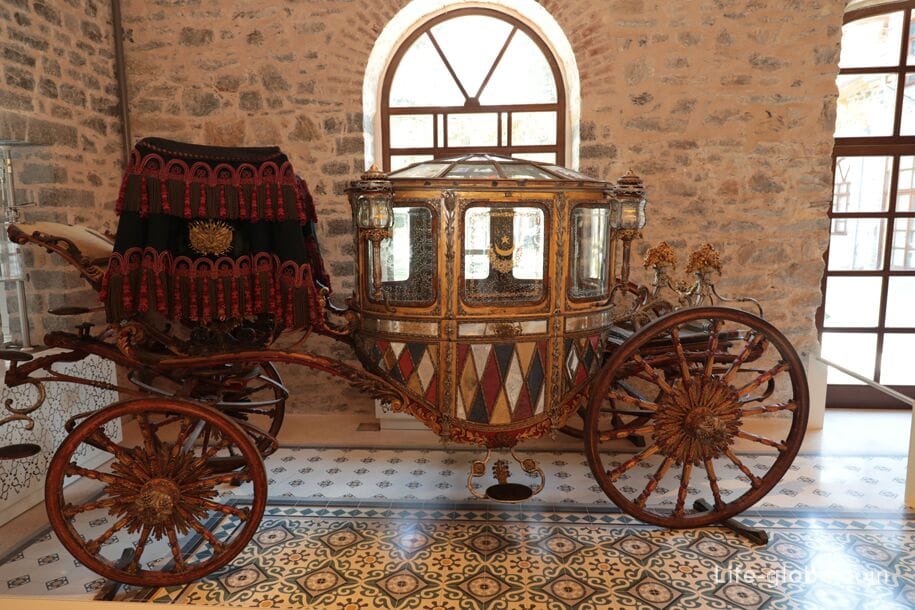
Beykoz Medjidie Mansion
Beykoz Medjidiye Mansion or Beykoz Palace (Beykoz Mecidiye Kasrı) is one of the oldest pavilions in Istanbul.
The construction of the pavilion, which was started by the Egyptian Governor Mehmed Ali Pasha as a gift to Sultan Abdul-Majid in 1845, was continued during the reign of his son, the Egyptian governor Said Pasha, after the death of Mehmed Ali Pasha in 1849. The complete construction was completed in 1854.
The Medjidiye Pavilion was not very popular with Sultan Abdul-Medjid, but it was often visited by Sultan Abdulaziz, especially in the summer months. The pavilion was used during sultan's hunts, as well as for daily living and official receptions. The Sultan received the French Empress Eugenie here on October 15, 1869 and together with her watched the army parade from the pavilion.
Today, this two-storey pavilion is a museum and one of the most elegant historical mansions in the city. The mansion is located in surrounded by groves with terraces, magnolias, pines and lime trees. From the territory of the palace park there are views of the Bosphorus.
Pavilion address: Yalıköy, Beykoz Kasrı, 34820 Beykoz/Istanbul, Turkey.
Beykoz Museum website: beykoz-mecidiye-kasri. More about the palaces of Istanbul...



Kyuchuksu Palace
The Palace of Küçüksu (Küçüksu Kasrı) is a neo-Baroque palace that served as the summer residence of the sultans of the Ottoman Empire, and today is a museum with palace halls.
Translated from Turkish, the palace is called as "The Palace of heavenly water" or "The Palace of small water".
This miniature palace was built in 1857 by order of Sultan Abd-ul-Majid I. The construction of the palace was carried out on the site of a two-story wooden palace built during the reign of Mahmud I.
Today, the Kyuchuksu Palace is a striking monument of the Ottoman Empire and functions as a museum with recreated palace interiors.
Entrance to the palace is paid.
Palace address: Göksu, Küçüksu Cd., 34810 Beykoz/Istanbul, Turkey.
Palace website: kucuksu-kasri. More about the Kyuchuksu Palace...
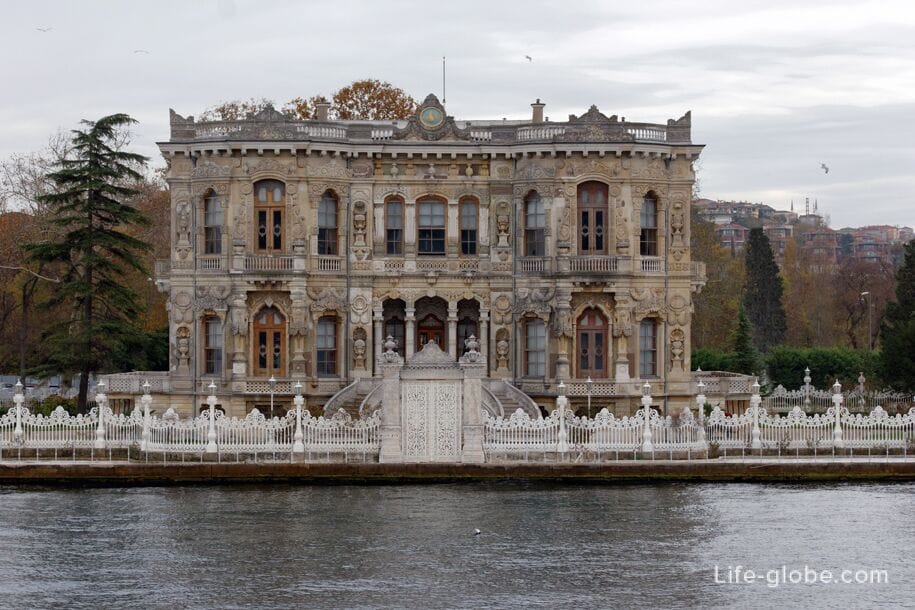
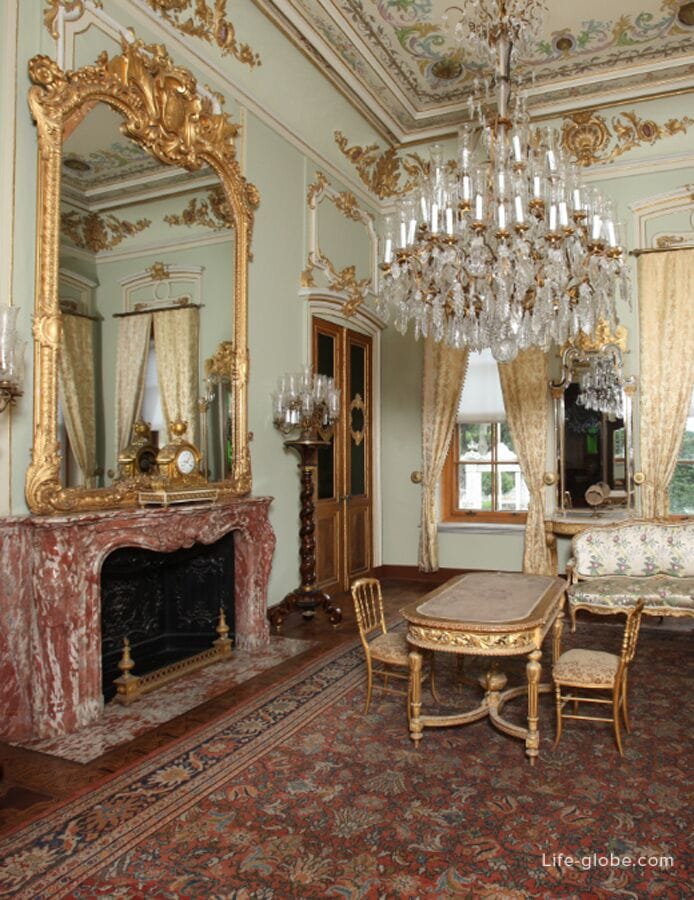
Beylerbeyi Palace
The Beylerbeyi Sarayı Palace is a 19th-century neo-Baroque palace that served as a summer residence and accommodation for high-ranking guests of the sultans of the Ottoman Empire.
The first wooden palace on the current site, known as the "Divergent Garden", was erected by order of Sultan Mahmud II in 1808-1839. After the destruction of the wooden building due to a fire, by order of Sultan Abdul-Aziz in 1863-1865, a new palace was erected, which acquired its current appearance.
Since 1912, the palace was the last residence of the deposed Sultan Abdulhamid II. Within the walls of the palace, the Sultan died in 1918.
Today the palace is a museum, which is a palace complex, which includes the main building of the palace with recreated interiors, as well as the surrounding garden with terraces, pavilions, sculptures, a fountain and a cafe.
The gardens of the Beylerbeyi Palace also attract attention by the fact that they have access to a terrace near the waters of the Bosphorus, which is used as an observation deck.
Entrance to the Beylerbeyi Palace and the adjacent park is paid.
The address of the palace: Beylerbeyi, Abdullahağa Cd., Istanbul.
Palace website: beylerbeyi-sarayi. More about the Beylerbeyi Palace...
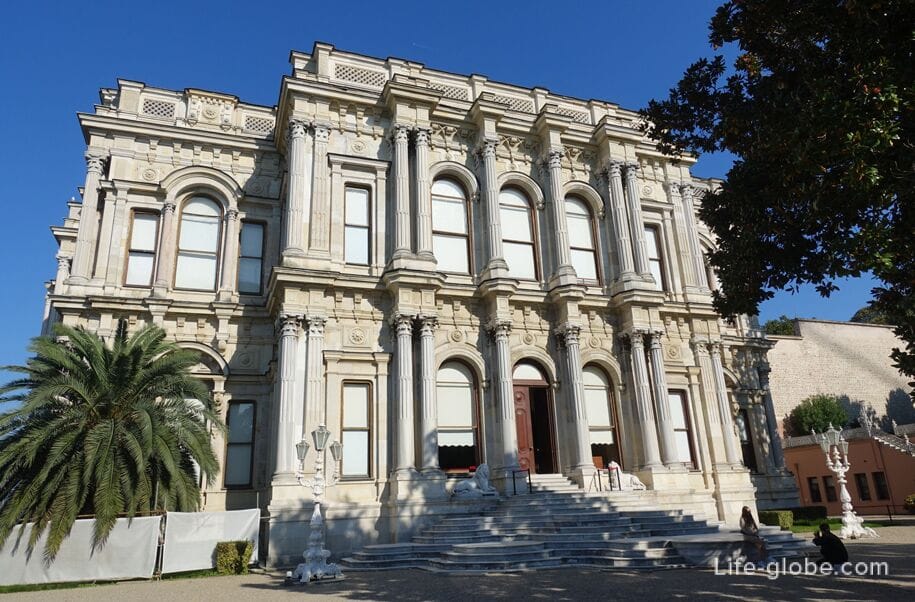

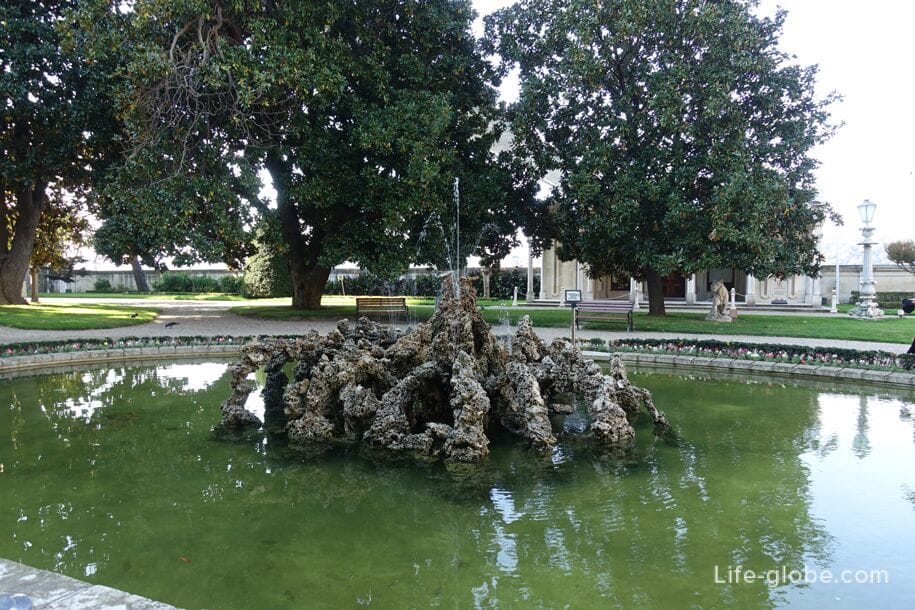

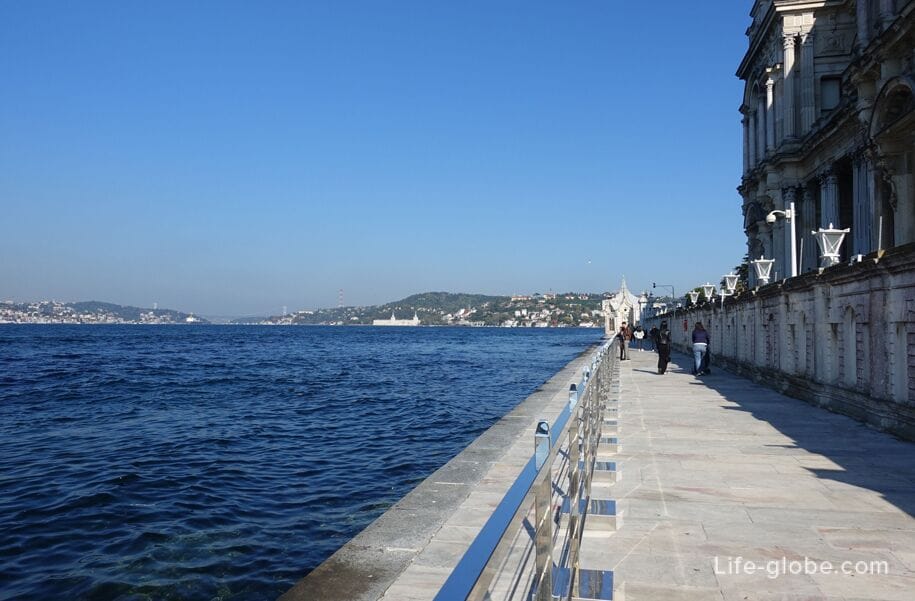
Museum "Memory of July 15"
The museum "Memory of July 15" (HAFIZA 15 TEMMUZ MÜZESI) was created so that descendants would not forget the experience of the attempted military coup in Turkey on July 15, 2016.
Next to the museum there is a monument "15 Temmuz Şehitler Anıtı".
The museum's address is: Kuzguncuk Mh, Nevnihal Sk. No: 12, 34674 Üsküdar/Istanbul, Turkey.
Museum website: hafiza15temmuz.org.
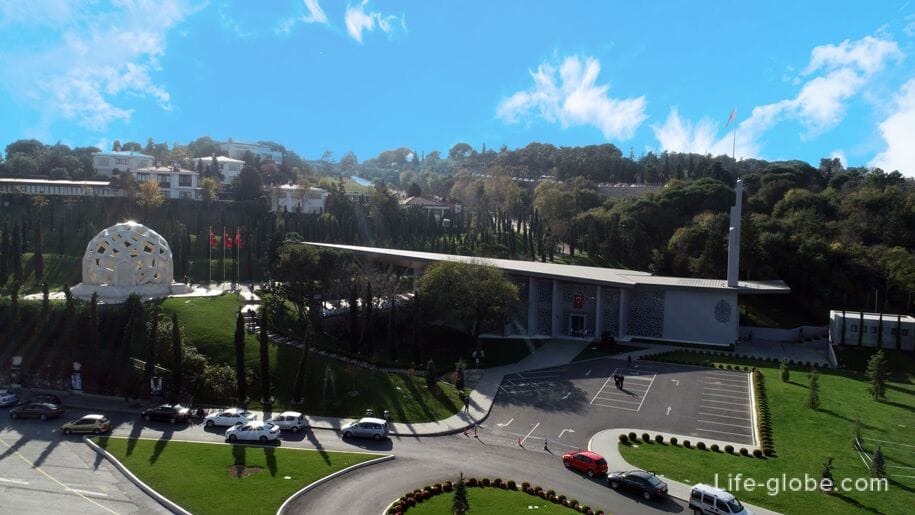
Istanbul Jazari Museum
Istanbul Jazari Museum (Istanbul Cezeri Muzesi) holds exhibitions and museum programs aimed at introducing and attracting the attention of visitors to the world cultural heritage in the fields of history, science, art and culture.
Museum address: Altunizade, Mahir Iz Cd. No: 30/1, 34500 Üsküdar/Istanbul, Turkey
The museum's website: cezerimuzesi.com.

Kite Museum
The Kite Museum (Uçurtma Müzesi) was created by Mehmet Aaji Akoz, who dedicated his life to kites and headed the Istanbul Kite Association.
The museum displays kites brought from different countries of the world.
There are small workshops at the museum, where children are helped to construct the simplest kites at master classes.
Museum address: Aziz Mahmut Hudayi Mah. Uncular Cd. Bakıcı Sk. No: 12 USKUDAR – ISTANBUL.
Website Museum: ucurtmamuzesi.net.
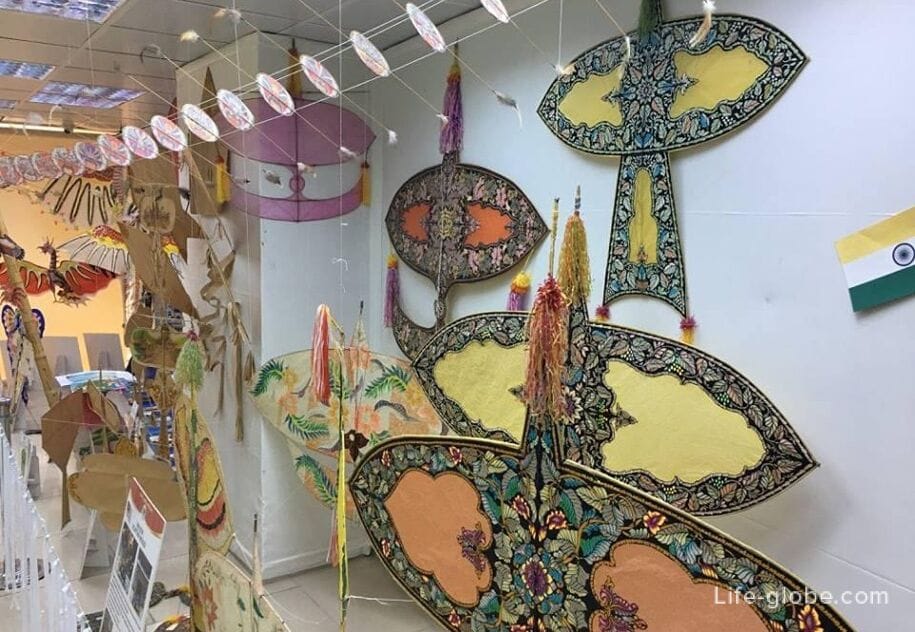
Gazhane Museum
The Muze Gazhane Museum is a cultural center on the territory of a former gas plant, where workshops and exhibitions are held.
Sculptures are located on the outdoor area.
Address: Hasanpaşa, Kurbağalıdere Cd. No: 125, 34722 Kadıköy/Istanbul, Turkey.
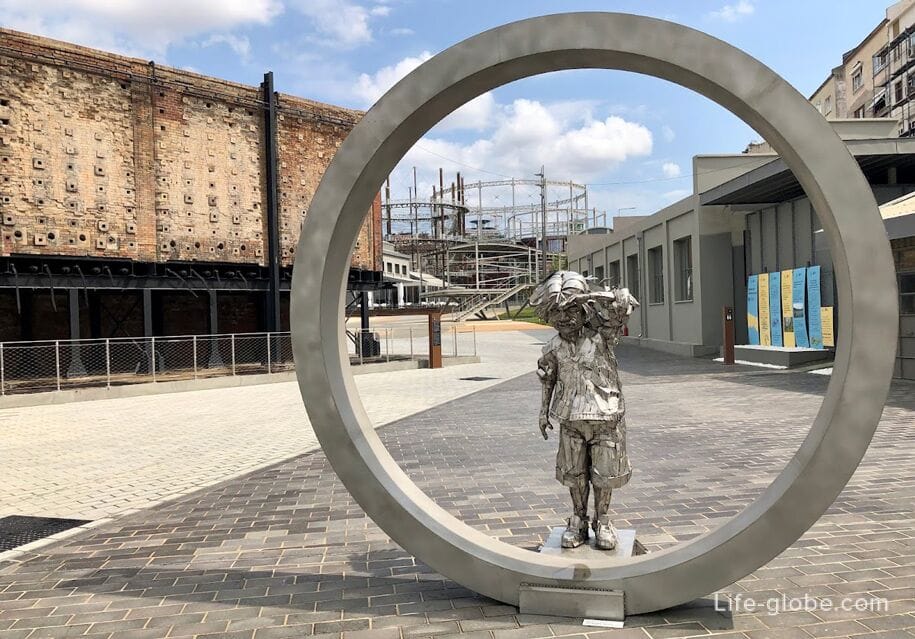
Hababam Class Museum
The Hababam Class Museum (Hababam Sınıfı Museum) is a small museum dedicated to the cult series of films about the school "Outrageous Class", where there is a recreated classroom with posters and photos of actors.
Address Museum: Altunizade, Tophanelioğlu Cd. No: 19/4, 34662 Üsküdar/Istanbul, Turkey.
Website Museum: adilesultankasriogretmenevi.meb.k12.tr.

Istanbul IMOG Graphics Museum
Istanbul IMOGA Graphic Art Museum (IMOGA Istanbul Grafik Sanatlar Müzesi) is an art museum whose collection consists of engravings.
The address of the museum is: Jalan, Keban Cd. No: 20, 34700 Üsküdar/Istanbul, Turkey.
The museum's website: imoga.org/en.

Toy Museum
The Toy Museum (Istanbul Oyuncak Müzesi) is a museum in a former mansion with many toys and compositions of toys, including antique sets and figures from 200 years ago.
The museum is based on toys that Sunai Akin (the founder of the museum and collector) bought from antique dealers and auctions in more than 40 countries over 20 years.
There is a cafe at the museum.
Museum address: Göztepe Mah. Ömerpaşa Cad, Dr. Zeki Zeren Sk No: 17, 34730 Kadıköy, Turkey.
The museum's website: istanbuloyuncakmuzesi.com.
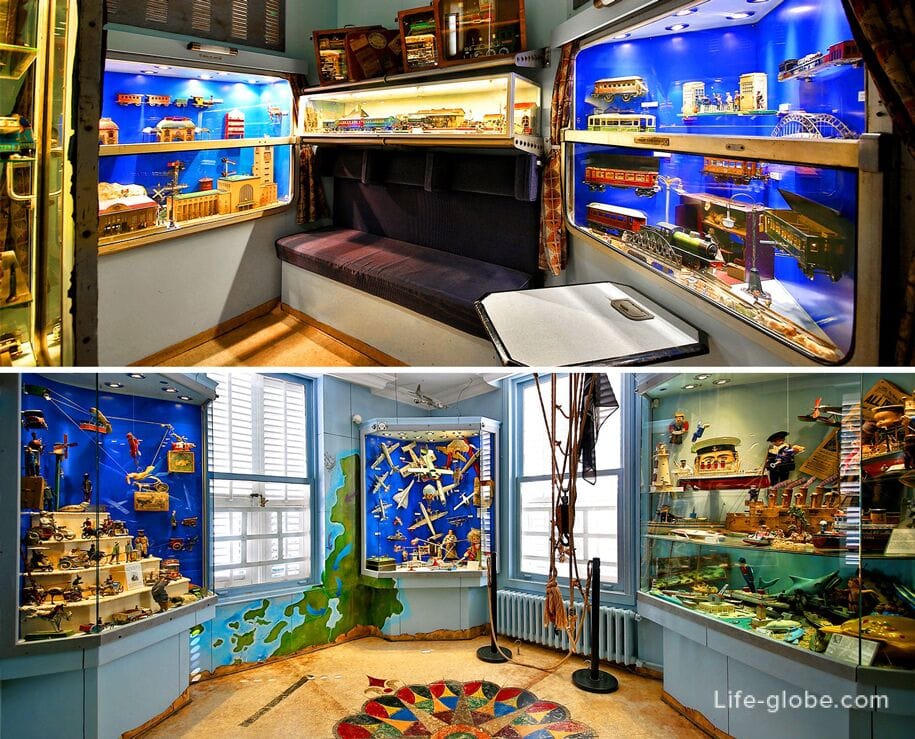
Kazim Karabekir Pasha Museum
The Kazim Karabekir Pasha Museum (Kazım Karabekir Paşa Müzesi) is located in a mansion built of wood by the Italian architect and sculptor Rosetta for the Minister of Education Abdulhamid Munif Tahir Pasha from Antep. After the collapse of the Ottoman state, the mansion remained empty until 1929.
The mansion was bought by Kazim Karabekir Pasha on November 15, 1930 and was used by his family as a place for summer holidays. During his lifetime, Kazim Karabekir Pasha created a museum in part of the mansion, where his family belongings, which he had kept since childhood, were exhibited. Returning to Istanbul in 1948 after the death of Kazim Karabekir Pasha, his family lived in the mansion year-round. However, after the death of his wife, Iklal Khanim, the mansion was inherited by Emel Karabekir Ozerengin, one of Kazim Karabekir's twin daughters. After the death of Emeli Karabekir Ozerengia in 1984, the mansion remained closed. In 2002, Pasha's daughters established the Kazim Karabekir Foundation "Pasha is Alive" to preserve the name and memory of Kazim Karabekir.
This place was opened to the public as a house museum, where personal belongings and documents of Kazim Karabekir and his family are displayed. The interior design of the museum is made taking into account the period when Kazim and his family lived in the mansion.
In the mansion there is a bedroom of Pasha and his wife, a room where photographs of family members are displayed, and a section where the clothes of pasha and his wife are displayed. On the lower floor, the family living room has been reorganized and opened to visitors, as well as Pasha's office and reception room.
Museum address: Erenköy, Kazım Karabekirpaşa Sok. No: 4, 34738 Kadıköy/Istanbul, Turkey.
The museum's website: kazimkarabekirvakfi.org.tr.
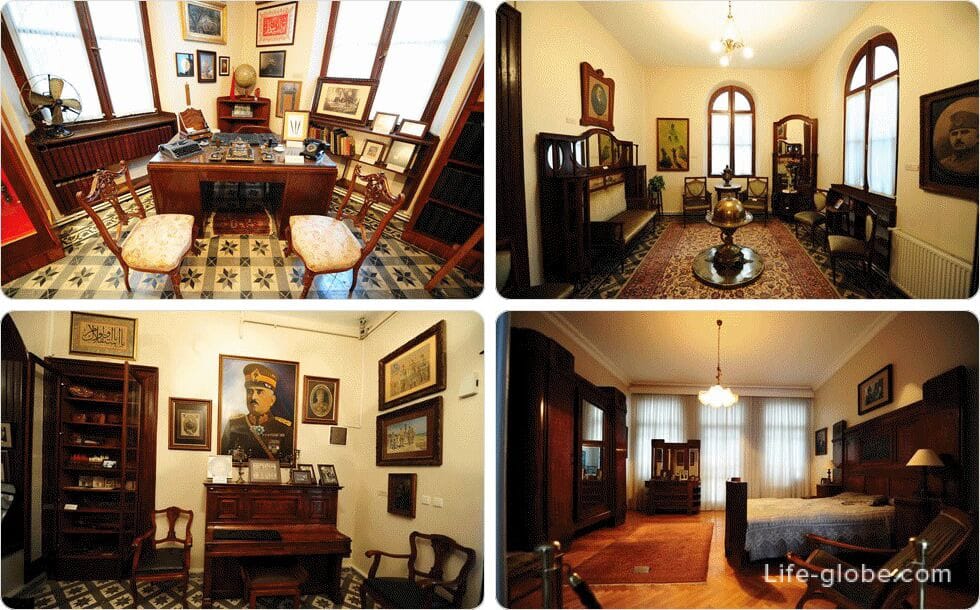
The Museum of Games in Dastepe
The Museum of Games in Dastepe (Düştepe Oyun Müzesi) is a toy museum in a small one-story wooden building in the park.
The Dustepe Games Museum and Playground contains children's games, including 150-year-old chess, a Victorian-era dice game, the first stone house building game and the first space games collected from more than 20 countries and about 150 collectors.
Museum address: Barbaros, Mimar Sinan Parkı Içi Yolu, 34746 Ataşehir/Istanbul, Turkey.
The museum's website: atasehir.bel.tr/dustepe-oyun-muzesi.
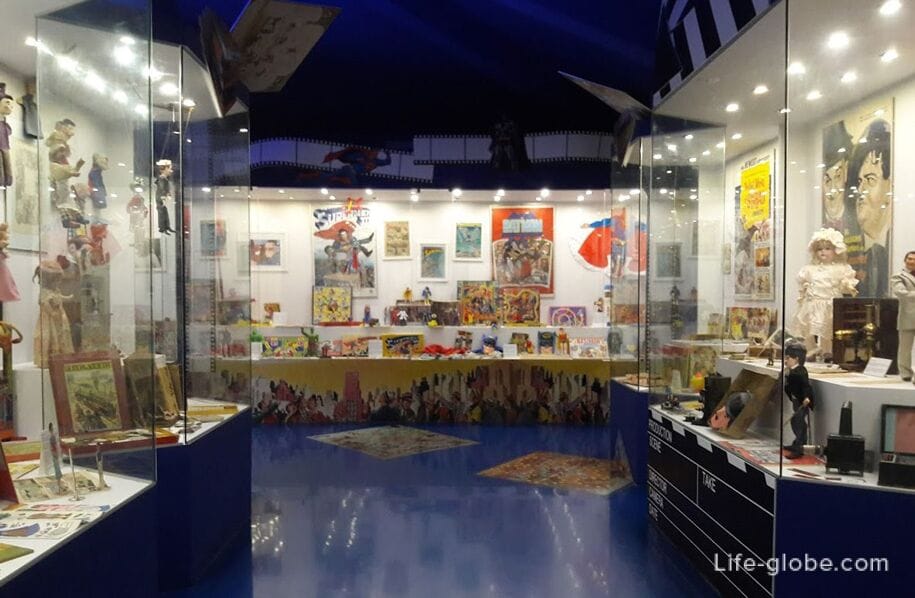
Istanbul Airport Museum
Istanbul Airport Museum is located in the New Istanbul Airport (Istanbul Havalimanı).
The museum introduces Turkish culture. Temporary exhibitions are held in the museum.
Museum website: museums-and-exhibitions.
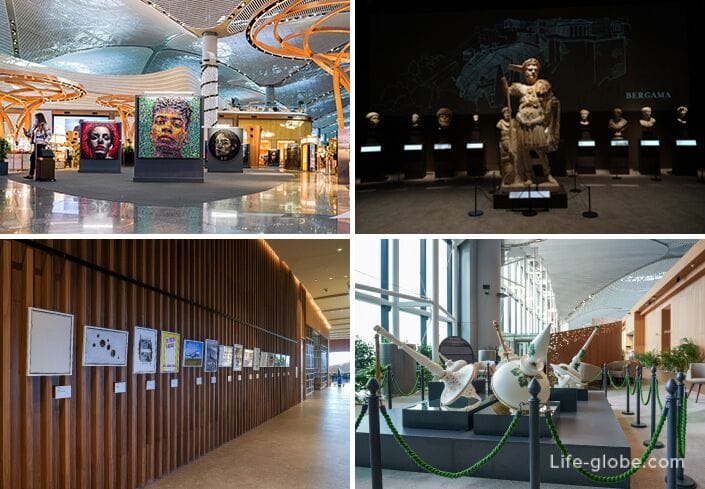
!!! Museums may close and/or move. We recommend that you check up-to-date information about museums, opening hours, conditions of visits and the cost of entrance tickets on the official websites of museums.
Museum maps of Istanbul
Some museums and sites in Istanbul have museum and tourist cards.
There are different types of maps in Istanbul. Some of which give the right to visit certain museums, while others, in addition to the main museums, include excursions, as well as some shows and entertainment, public transport rides and discounts on airport transfers.
The classic and most common is the museum card "Museum Pass Istanbul" (Museum Pass Istanbul), which gives the right to enter some museums of the city. There are also more extended Istanbul E-Pass and Istanbul Tourist Pass cards, which give the right to visit museums, attractions, guided tours, an aquarium, shows, cruises along the Bosphorus, trips outside the city, etc. Learn more about museum and tourist maps of Istanbul...
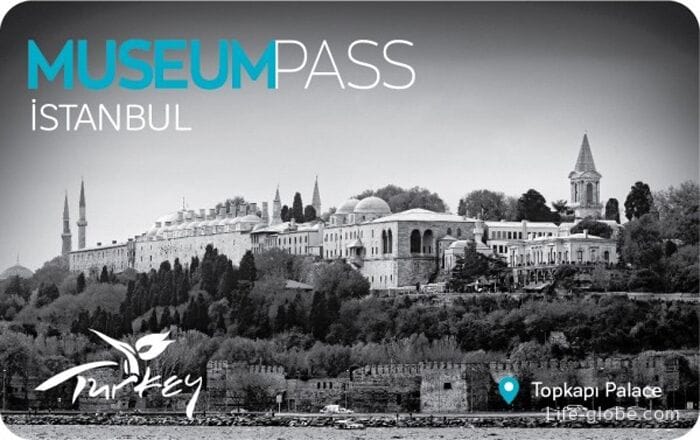
Tourist buses in Istanbul
You can visit some of the main sights and museums of Istanbul by taking a tour on the Istanbul Hop-On Hop-Off tour bus.
There are tickets for 1, 2 or 3 days.
Tickets for the Istanbul sightseeing bus can be purchased here →
All accommodation facilities in Istanbul, including in the historical center, in the European and Asian parts of the city, can be viewed and booked here




